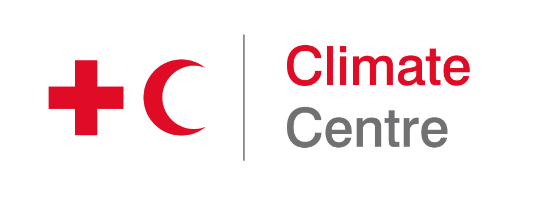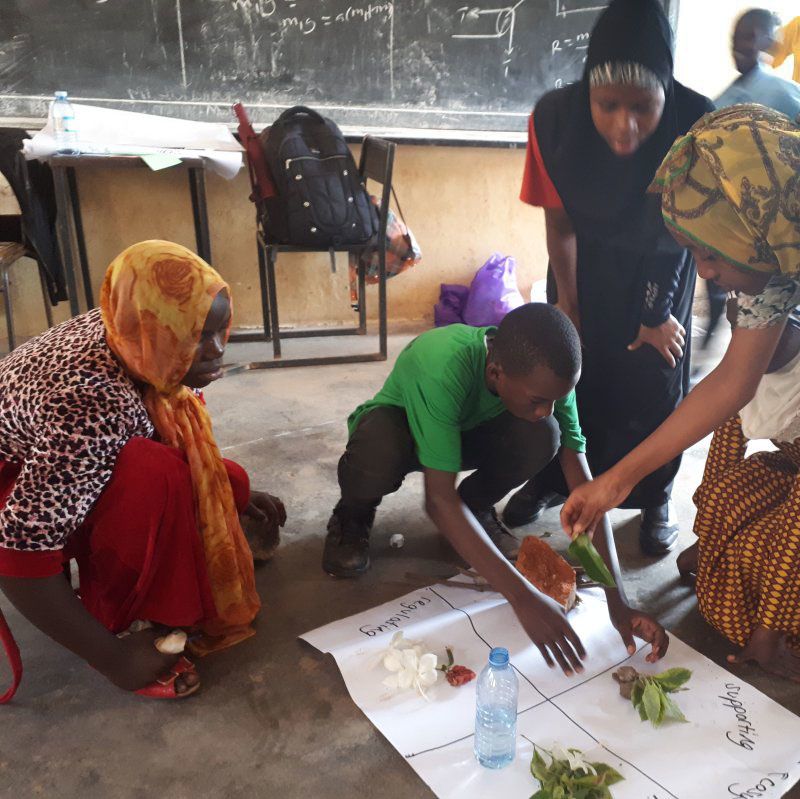Annual Report 2019
The Year of Ambition
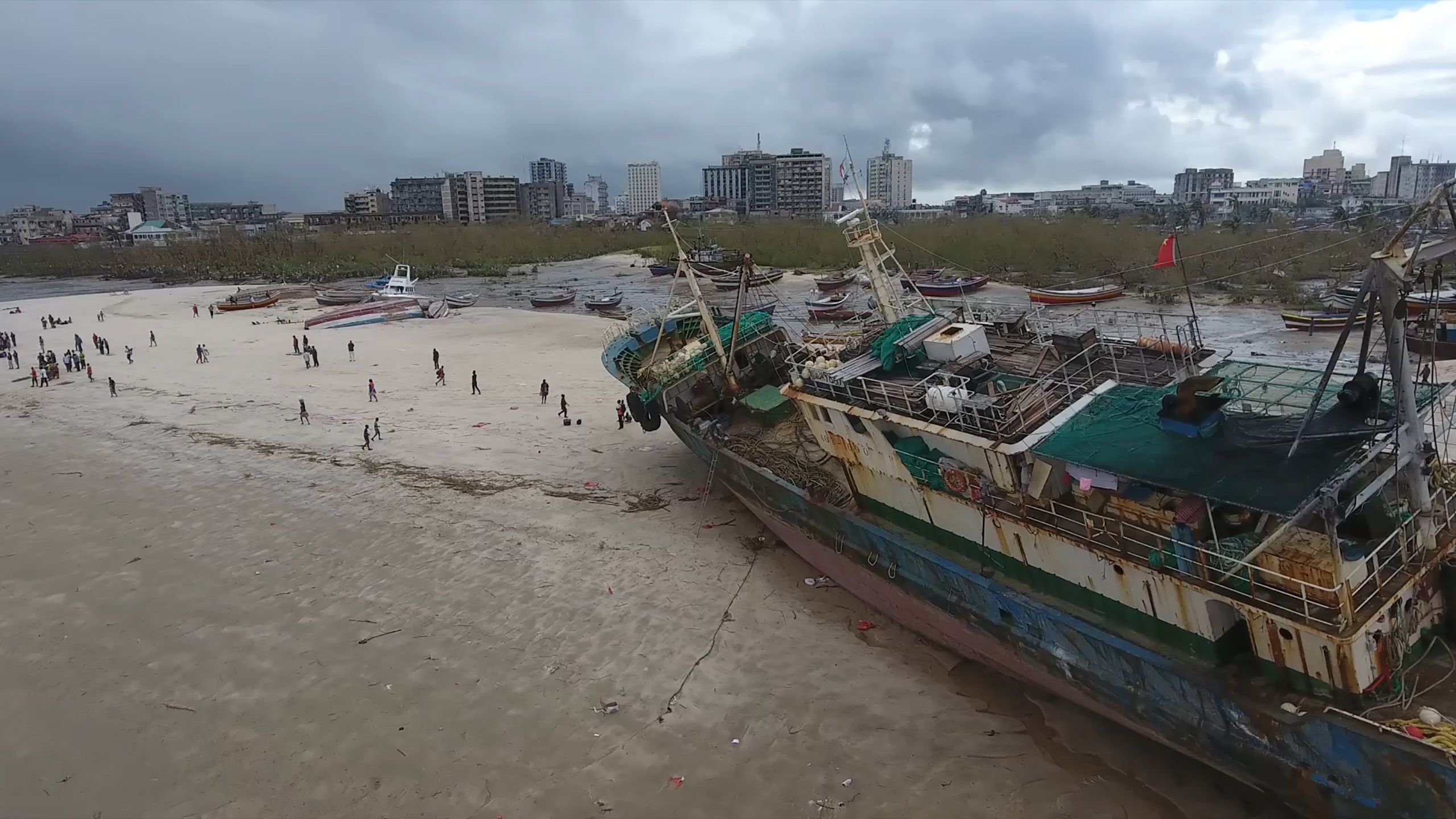
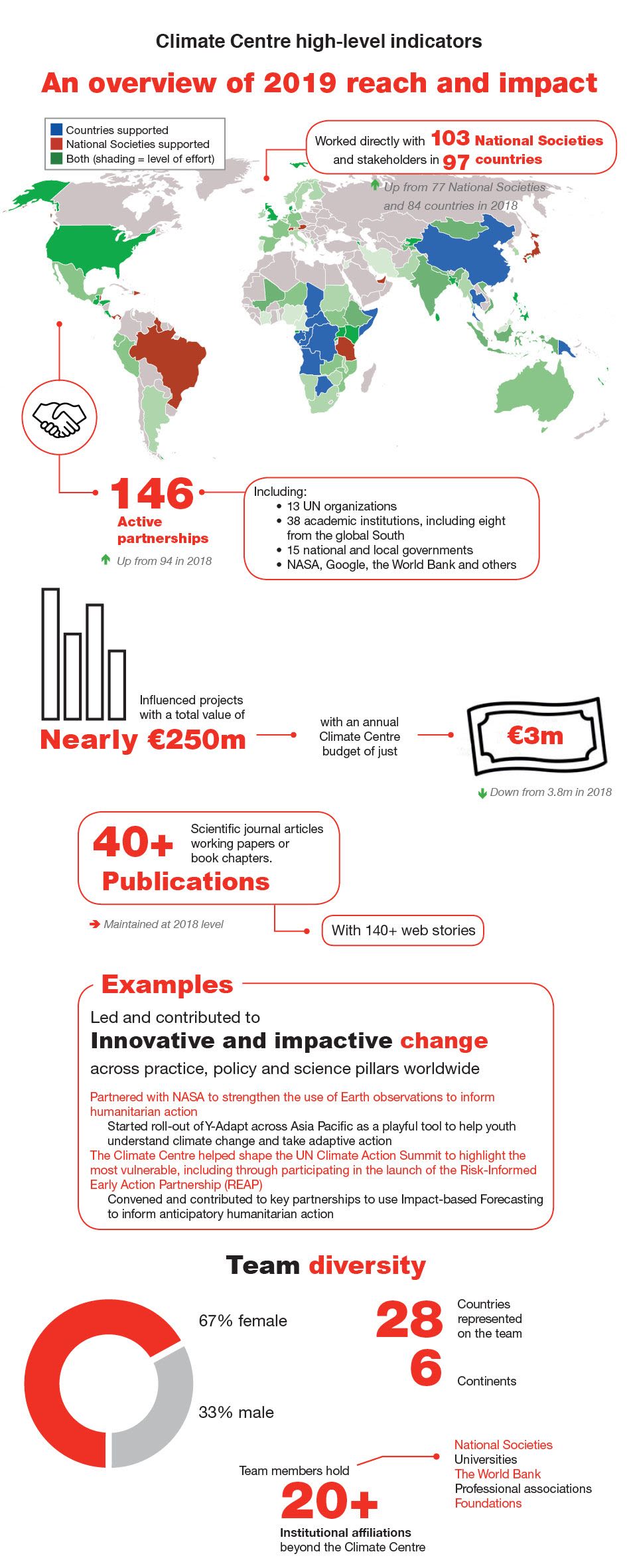
PREFACE
We compiled this annual report amid Covid-19 lockdown and a once-in-a-century global pandemic, inevitably struggling to compartmentalize our work in 2019; nothing will be quite the same again.
As we look back on the past year we see, if anything, two agendas moving in parallel, if not actually merging, but we believe our work on climate in 2019 helped us respond to the pandemic and begin to plan for recovery.
Covid-19 brought underlying vulnerability to shocks – already apparent with disasters and health emergencies – into stark relief.
Like climate change the pandemic represents a genuinely global challenge with huge local impacts. We quickly realized it would be business as usual in terms of climate-related disaster: in locations as far apart as the South Pacific (Cyclone Harold) and the United States (tornadoes), the authorities faced acutely difficult decisions about how to evacuate people who are also social-distancing.
In East Africa, communities confronted the triple threat of Covid-19 and its economic consequences, locust invasions, and floods – a potentially perfect storm of compound risks of a kind we’re bound to see more of in a changing climate.
The Covid-19 crisis and ensuing stimulus recovery packages that will amount to over US$ 10 trillion represent the best and perhaps last opportunity to redesign social and economic systems so they better meet the needs of the most vulnerable, protect nature, strengthen global solidarity, and align with global climate goals.
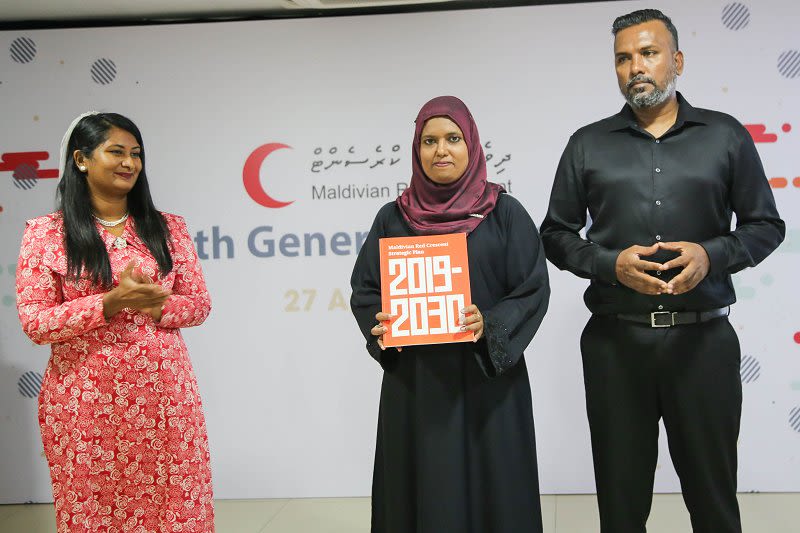
Long-term priority #1 for the Maldivian Red Crescent? The climate threat
Long-term priority #1 for the Maldivian Red Crescent? The climate threat
At the heart of this work is the need to be build resilience to a range of shocks.
More specifically, we are now focusing efforts to ensure systems shaped by stimulus packages will anticipate and prepare for compound risks. This includes identification of short and long-term risks and adjusting plans to account for changing reality.
It also includes strengthening capacities and systems at the local level to prepare for changing realities, and taking action accordingly.
It means lobbying for system change, including the role of social protection for supporting those most directly affected by climate and other shocks, and ensuring support reaches them in time.
In 2019 we saw an expansion of ambitious climate action in many vulnerable communities and countries – an investment that is already paying off in greater resilience, yet one that needs to be vastly expanded in the light of the growing threats, now and into the future.
by Ed Nijpels and Maarten van Aalst
At left: Y-Adapt youth training launched in Lebanon in 2019. But when will such interaction be possible again?

Policy and advocacy
‘By investing in climate adaptation and disaster risk reduction, including through efforts to improve early warning and anticipatory humanitarian action, the world can avoid…escalating suffering and ballooning humanitarian response costs’
– Francesco Rocca, IFRC president (launching The Cost of Doing Nothing report)
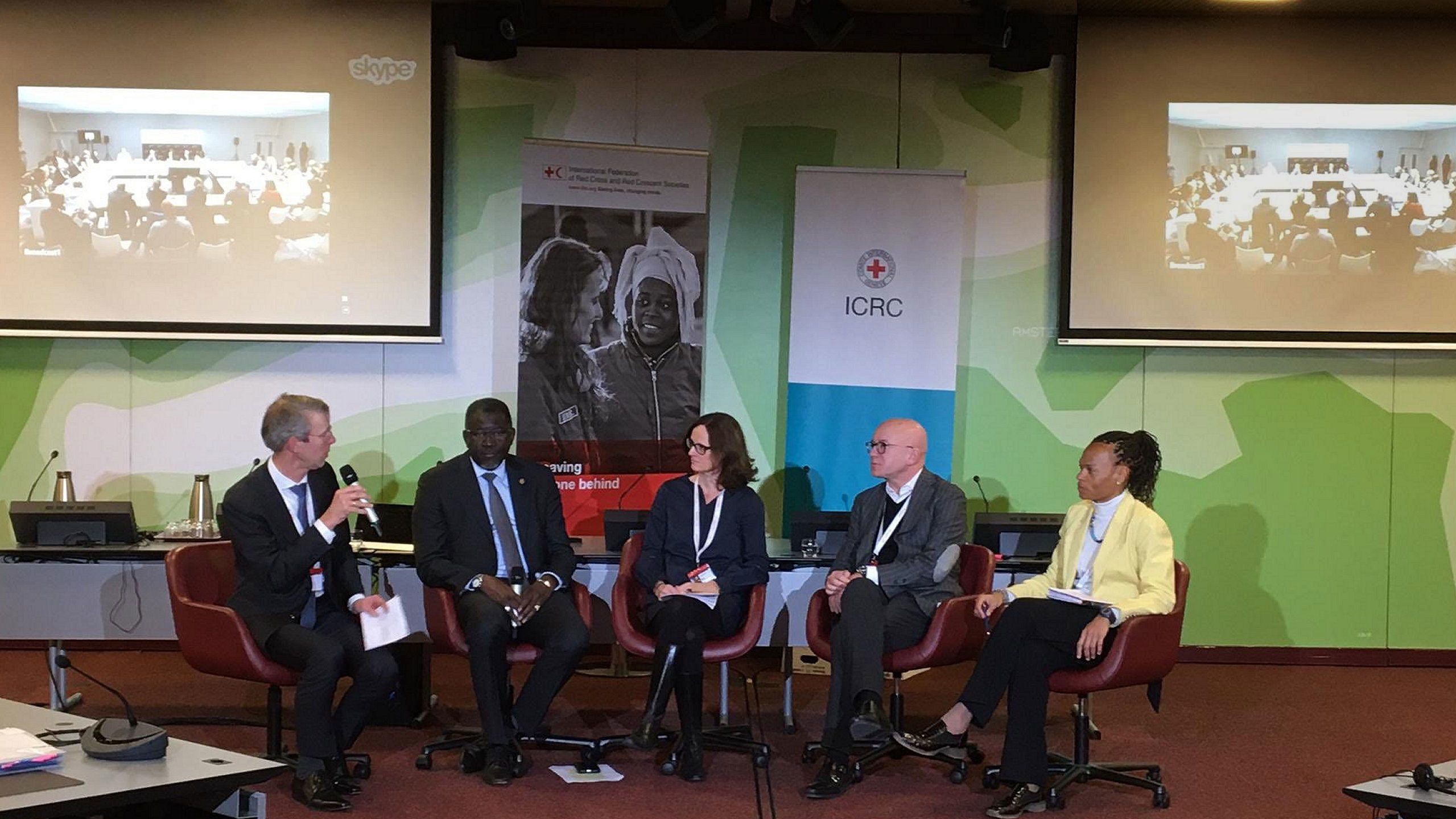
Both within and beyond the Red Cross and Red Crescent Movement, the year saw greatly heightened ambition on climate action – with a strong focus on the consequences already facing the most vulnerable.
The links between the climate and humanitarian agendas reflect both the changing climate itself and its impacts, as well as years of joint effort by the climate, development and humanitarian communities bridging policy and practice, global ambitions and local action.
Nothing reflected this better than the much-heralded Risk-informed Early Action Partnership launched as a key commitment at the UN Climate Summit last September.
Some argued it was too little too late, but the new focus on early action in the face of rising risks is paying off in practice.
Attention to humanitarian issues at the UN summit was mirrored by the statutory meetings of the Red Cross and Red Crescent in Geneva. On the first day of the 2019 General Assembly – after a two-year consultation with the entire Movement network plus specialist input from the Climate Centre – an IFRC press release endorsing its Strategy 2030 said climate change was “a growing concern for nearly every one of the 192 National Red Cross and Red Crescent Societies”.
Strategy 2030 places climate change and environmental crises top of five global challenges for the coming decade – an unprecedented degree of emphasis on the issue.
The IFRC will now focus on reducing the humanitarian impacts of the climate and environmental crises, integrating climate risk management – including adaptation and mitigation – “across all of our programmes, operations and advocacy”.
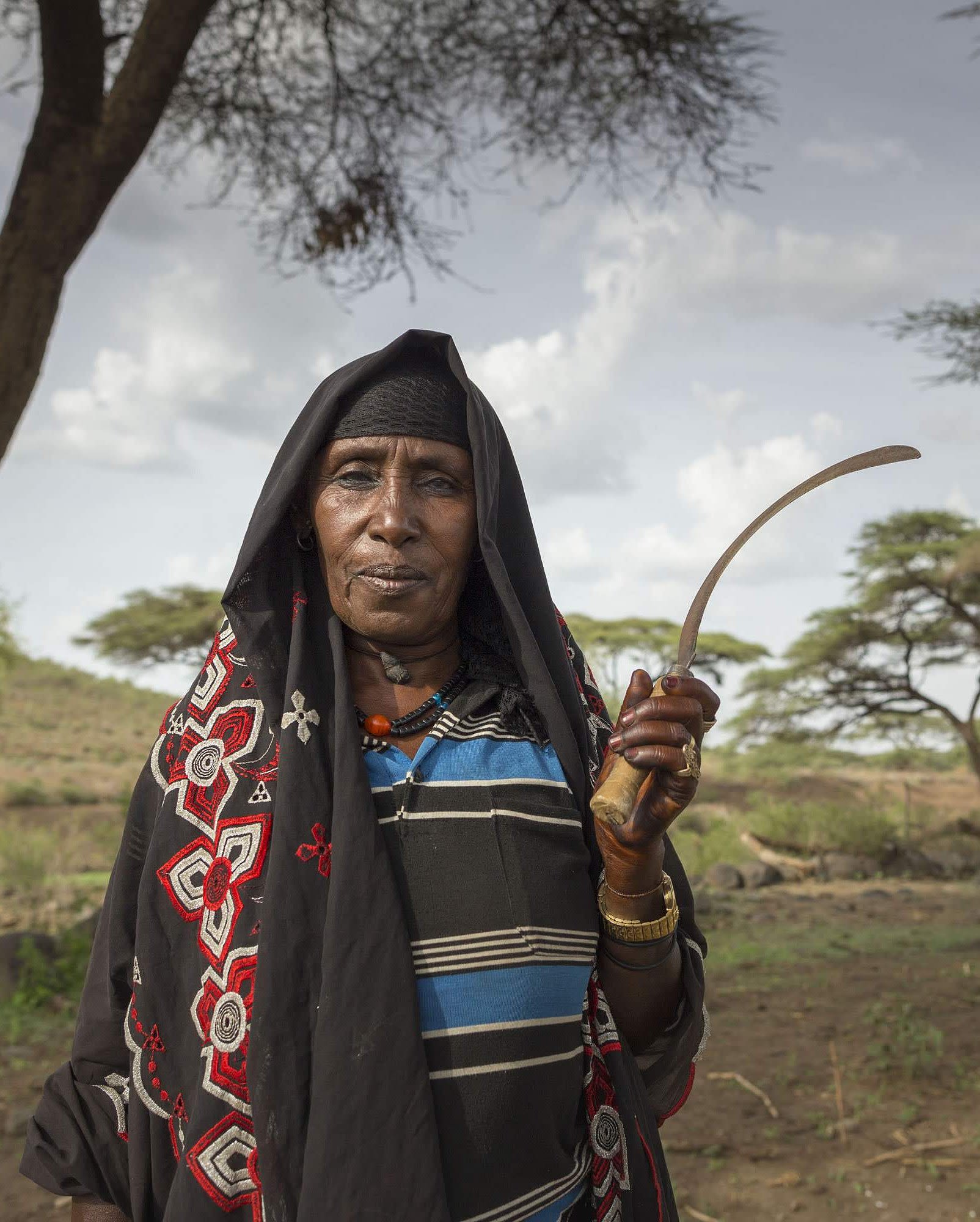
PfR, Kediga Humed, farmer and cook, Afar, Ethiopia (see We Bend, We Do Not Break, 2020 for details)
PfR, Kediga Humed, farmer and cook, Afar, Ethiopia (see We Bend, We Do Not Break, 2020 for details)
A historic virtual event connected COP 25 in Madrid and the International Conference of the Red Cross and Red Crescent (main photo) – the first time senior figures from each meeting have been brought together in a webcast.
Opening the online exchanges, UNFCCC Executive Secretary Patricia Espinosa said there was now “a very close relationship” between climate and humanitarian agendas.
The International Conference also included a side-event on how to be climate smart, and the launch of a new consortium on climate research for the Movement; Princess Margriet of the Netherlands convened a high-level panel on climate-smart disaster risk reduction.
Alongside the rescheduled COP, the 17th annual Development and Climate Days went ahead in Madrid over a single day.
Ahead of the attention to climate at the statutory meetings and in Strategy 2030, the IFRC launched the global #FacesofClimateChange campaign, highlighting the humanitarian consequences of inaction on climate.
The Climate Centre was an important contributor to two major reports underpinning that campaign: our Heatwave Guide for Cities, published in July at the UN in New York (see ‘Urban heat’), and shortly afterwards the IFRC’s The Cost of Doing Nothing, which warned that the number of people needing humanitarian assistance every year after climate-related disasters could double by 2050.
The latter presented “some of the potential consequences should the global community fail to address the rising risks of a changing climate,” said the Climate Centre’s Julie Arrighi, a key contributor to both reports.
But it also highlighted positive outcomes “if the global community takes action now to build resilience, adapt and address the current climate crisis.”
Forecast-based action
‘This finance allows the Red Cross to help some of the most at-risk people before winter sets in’
– Mongolian Red Cross Society
Secretary General, Bolormaa Nordov
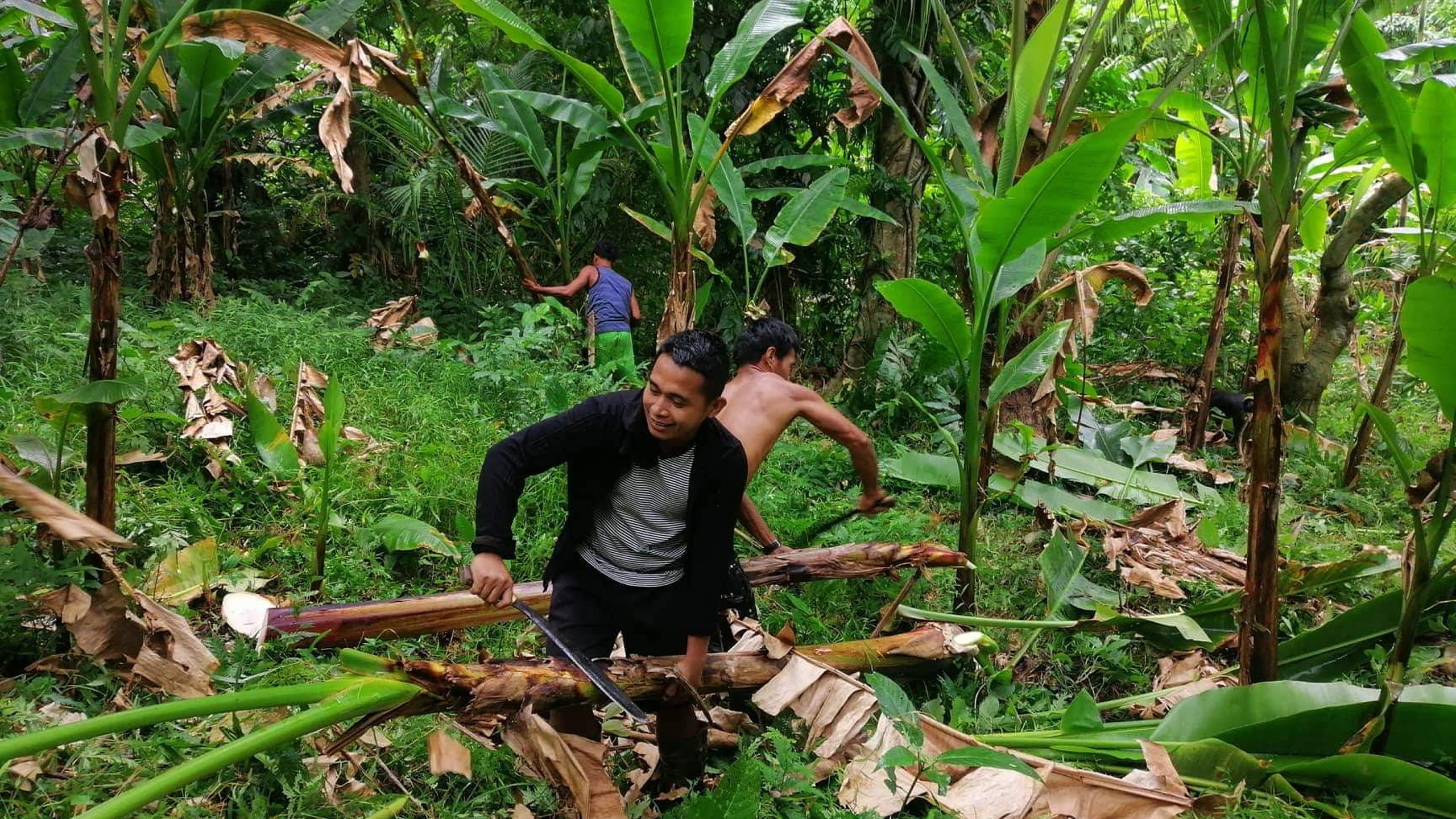
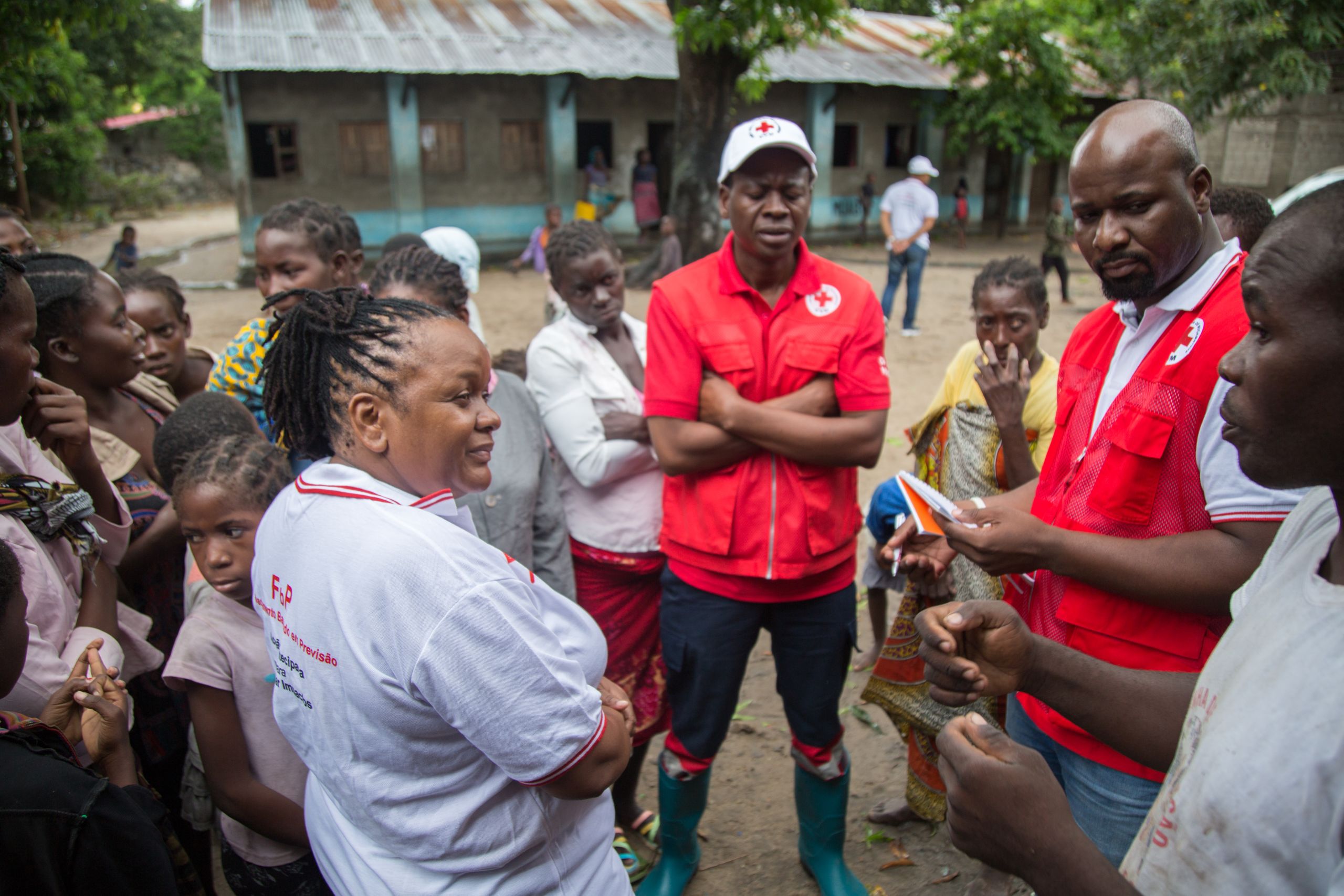
The FbF team in Beira, Mozambique advise residents the day before Cyclone Idai hit
The FbF team in Beira, Mozambique advise residents the day before Cyclone Idai hit
The scope of operational forecast-based financing and action broadened, notably with the first-ever use anywhere in the world of the FbA mechanism now embedded in the IFRC’s Disaster Relief Emergency Fund, launched with the German government and Red Cross in 2018.

The FbF team in Beira, Mozambique advise residents the day before Cyclone Idai hit
As the culmination of a process that began in October with agreement on the relevant operational protocols, local forecasts of an extreme winter in Mongolia triggered the release in early January 2020 of nearly US$ 220,000 to reduce its impact on vulnerable herders.
The FbA grant provided money to 1,000 families to help keep the animals on which they depend alive for the worst of the winter.
By year’s end at least 11 protocols for Red Cross Red Crescent early action under the umbrella of DREF worldwide had been approved centrally or were under review, with a further 25 being developed by National Societies; they delineate responsibilities for rapid action when a humanitarian forecast threshold is reached.
The donor societies collaborating with the German trailblazers in supporting the International Federation’s development of FbF/A now are: the American, Australian, Belgian, British, Danish, Finnish, French and Netherlands Red Cross.
Mark Lowcock, UN Under Secretary General for Humanitarian Affairs, told an audience in Berlin he was allocating US$ 45 million from its Central Emergency Response Fund for food insecurity in Somalia, Ethiopia and Kenya.
Describing Germany as a global thought leader with its support for FbF piloting, the UN humanitarian chief said the international community needed to repeat the success of 2017 when “four consecutive failed rains brought Somalia to the brink of famine [but] early warning led to earlier action”.
There were also triggers for hydrometeorological events last year in Bangladesh, Niger and the Philippines (main photo), supported by bilateral donors.
A new FbF programme in Mozambique was being scoped when Cyclone Idai struck in March, but the team (photo, left) deployed resources on a test activation in the north of the country and early positioning of emergency-shelter materials in Beira.
Advocacy work on FbF last year included a side-event at the Global Platform for Disaster Risk Reduction organized with FbF partners from the World Food Programme; and the fourth Global Meeting on Innovation in Humanitarian Action in Qatar, where the Climate Centre outlined National Society experience.
We helped scientists from Mali, Mozambique, Uganda and Zambia attend a study visit at the UK’s University of Reading centred on flood forecasting, FbF triggers and the Global Flood Awareness System.
Science
‘The partnership with science is fundamental in identifying solutions for society. We need the enabling environment of governments that have the foresight of integrating science’
– Debra Roberts, IPCC Working Group II Co-Chair
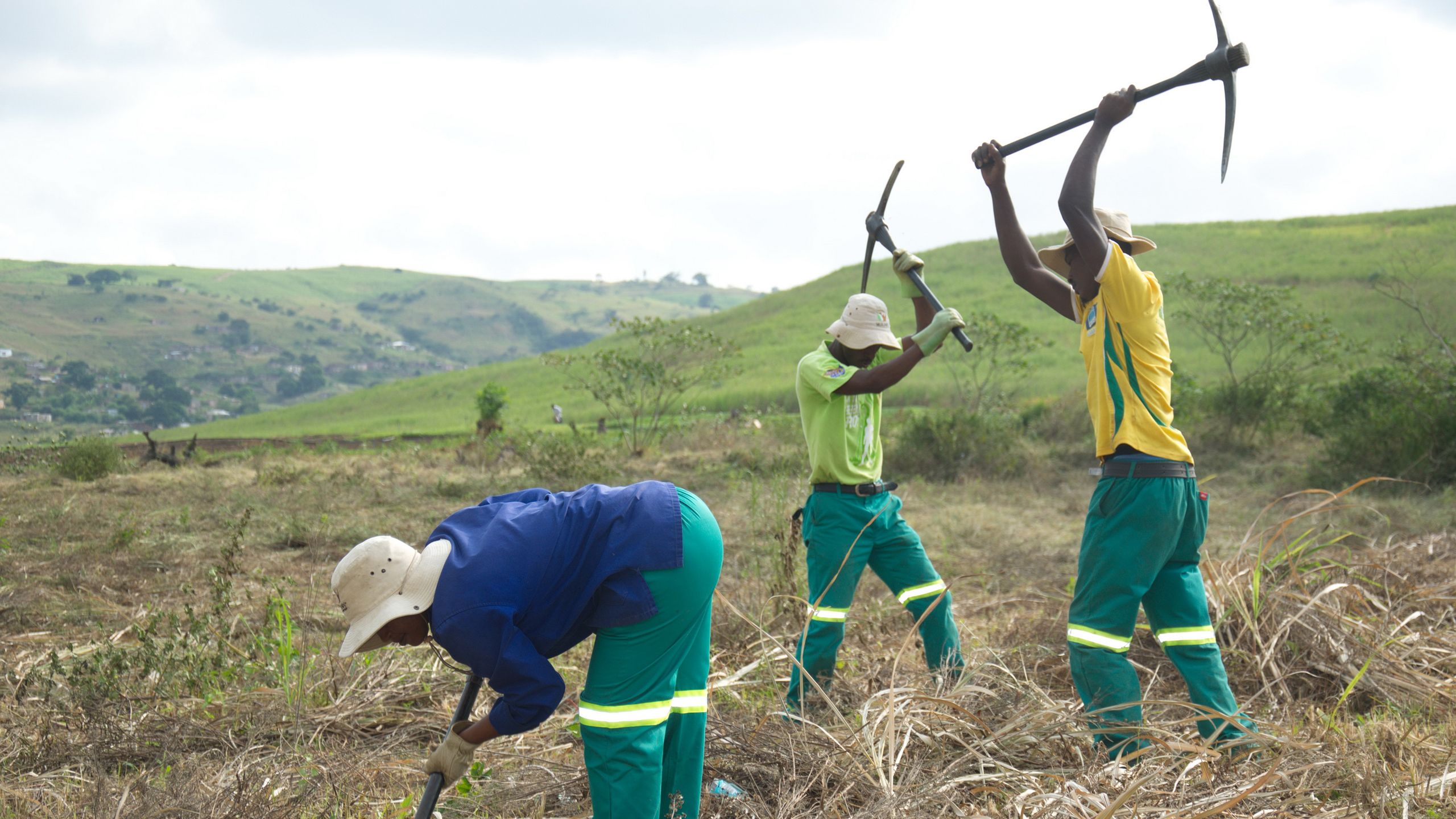
Scientists on Working Group II of the Intergovernmental Panel on Climate Change – who since 2018 have included three colleagues from the Climate Centre – began work on their contribution to its sixth assessment of the global climate, due for publication in two years, which will inform the first major stocktake on the 2015 Paris Agreement.
Their first lead-author meeting, in Durban, South Africa, included a field visit to a project described as a “great example of thinking globally and acting locally” – the community reforestation programme (main photo) at Buffelsdraai, 30km north of the city.
Climate Centre Director Professor Maarten Van Aalst – who was joined in Durban by its Manager, Climate Science, Erin Coughlan de Perez, and Senior Pacific Climate Adviser Olivia Warrick, all of whom will all write for AR6 – said it was encouraging to see the IPCC involve more authors combining scientific backgrounds with humanitarian, disaster management, and development experience.
He added: “Another important role for these experts is to help get local knowledge on climate risk, drawn from their own field experience, recognized as a crucial part of the evidence base.”
This was a theme he returned to later in the year in his inaugural lecture as new Professor of Spatial Resilience for Disaster Risk Reduction at the University of Twente, where he called for the building of resilience “in a very practical manner”, connecting local and global challenges and solutions, linking the past, present and future, and connecting science to policy and practice.
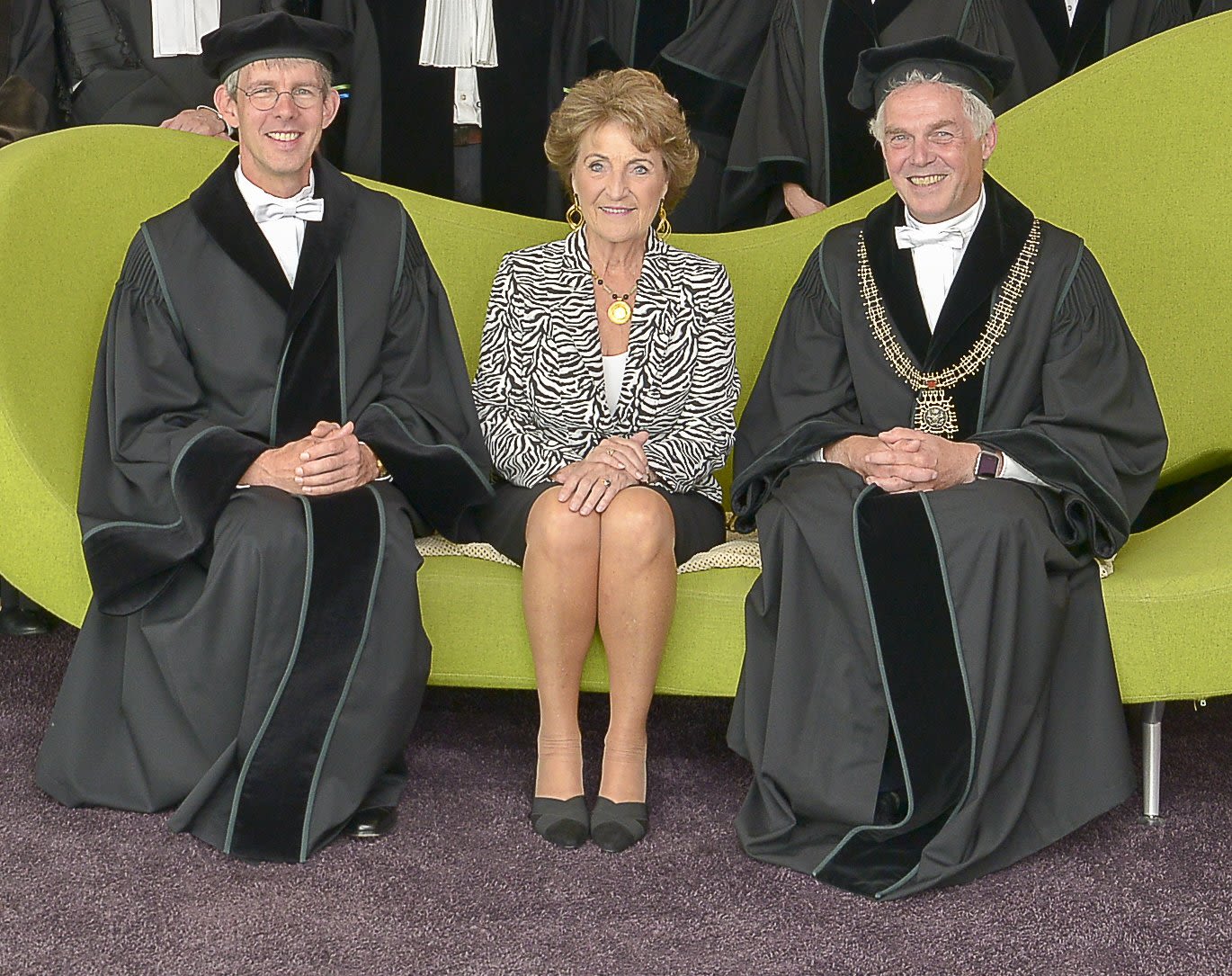
Princess Margriet of the Netherlands with (at right) the Rector of the University of Twente, Thom Palstra, and Professor Van Aalst
Princess Margriet of the Netherlands with (at right) the Rector of the University of Twente, Thom Palstra, and Professor Van Aalst
Another exciting scientific collaboration last year – EO4HA – generated suggestions for ways in which risk might be made visible from space. Earth Observation for Humanitarian Action, a joint effort of NASA, the American Red Cross, the IFRC and the Climate Centre, is part of a wider movement to move from simply disseminating data to full integration of the science underlying humanitarian decision-making.
“Climate change is not a matter of the future, it is a matter of today – we need the science and we have the science now. The question is, are we listening to it?” outgoing IFRC Secretary General Elhadj As Sy asked the annual Global Dialogue Platform on Anticipatory Humanitarian Action in Berlin.
And indeed our work on science is only effective if it results in better policy and practice: the Bangladesh Red Crescent Society, for example, last year concluded that its “operational decision-making had become clearer and more straightforward” thanks to its improved use of scientific information centred on FbF.
Attribution
‘Even at this regional scale over Europe, we can see these [heatwave] trends are much larger than what we would expect from natural variability’
– Climate scientist Ruth Lorenz,
Swiss Federal Institute of Technology
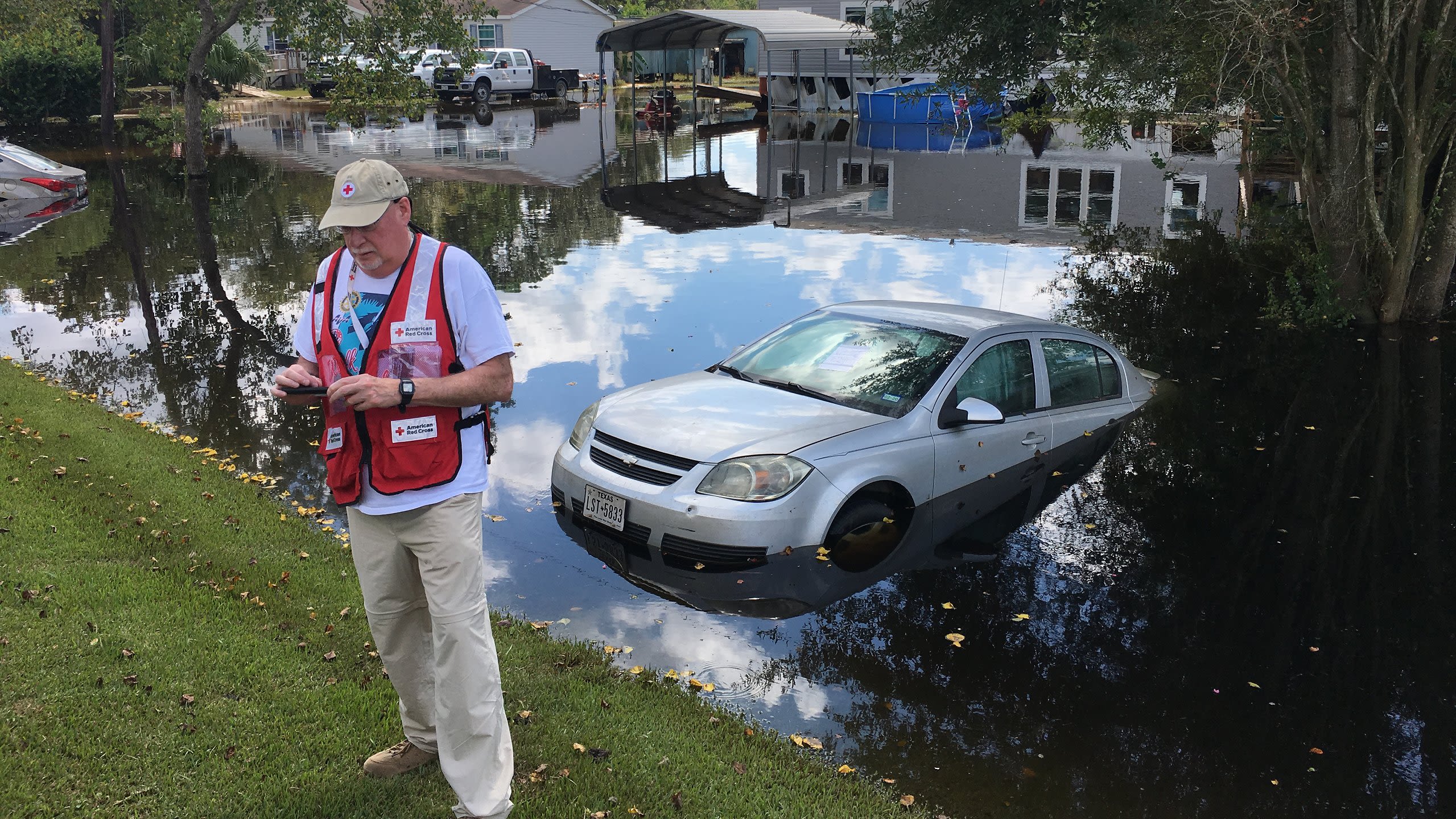
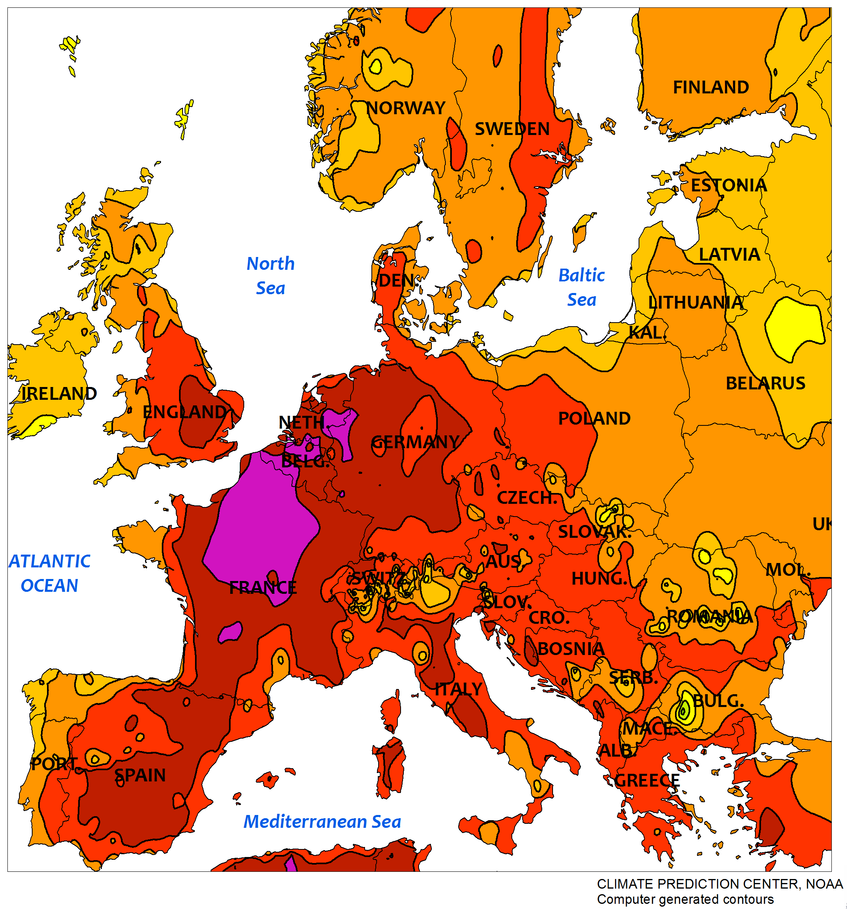
July 2019 heatwave mapped by US Climate Prediction Centre (purple areas >40°C)
July 2019 heatwave mapped by US Climate Prediction Centre (purple areas >40°C)
The attribution work the Climate Centre is a partner in was dominated by one hazard on one continent: European heatwaves.

July 2019 heatwave mapped by US Climate Prediction Centre (purple areas >40°C)
World Weather Attribution first issued a rapid assessment of three days of scorching heat in France in late June, saying climate change had made the event five times more likely and had boosted the actual heat by about 4°C.
A later WWA analysis based on data from locations in France, Germany, the Netherlands and the UK said the second record-breaking heatwave in July (map, left) was up to 3ºC hotter and “much more likely because of climate change”.
“The heat in July broke records all around Europe due to climate change,” said Dr Friederike Otto, a member of the group, who added that the heatwave developed differently in different places, but was everywhere more likely now with climate change.
But what was also clear, even as the reports were released, is that the impact on people was less than in the past because governments have instituted measures to cope after the deadly game-changing 2003 heatwave.
Our colleague Geert Jan van Oldenborgh, a senior researcher with the Royal Netherlands Meteorological Institute, said heatwave action-plans developed by governments had been shown to decrease mortality “substantially”.
Professor Van Aalst said these WWA findings were supported by a later study by the Swiss Federal Institute of Technology in Zurich which found that the average number of days of “extreme heat and heat stress” in Europe had more than tripled since the 1950s from less than two a year to more than six.
That study, which WWA was not involved with, found that seasonal cold and hot extremes had both warmed at almost all measuring stations involved – “a climate change signal that cannot be explained by internal variability”.
In another rapid analysis WWA scientists said the extreme rainfall and floods caused by Tropical Storm Imelda that affected Texas and Louisiana (main photo) were made up to 2.6 times more likely due to climate change and up to 17 per cent more intense.
Climate change had “clearly led to increased precipitation during extreme events in south-east Texas,” said the WWA group, who also wrote in a blog that air pollution that blocked sunlight and increasing irrigation were among an array of factors masking a clear upward trend in extreme temperatures in India.
Urban heat
‘Today, nearly a third of the world’s population faces heat spikes for at least 20 days a year. By 2100, this could rise to 70 per cent…if nothing is done to limit global warming’
– French Red Cross website, Health and Climate Change conference
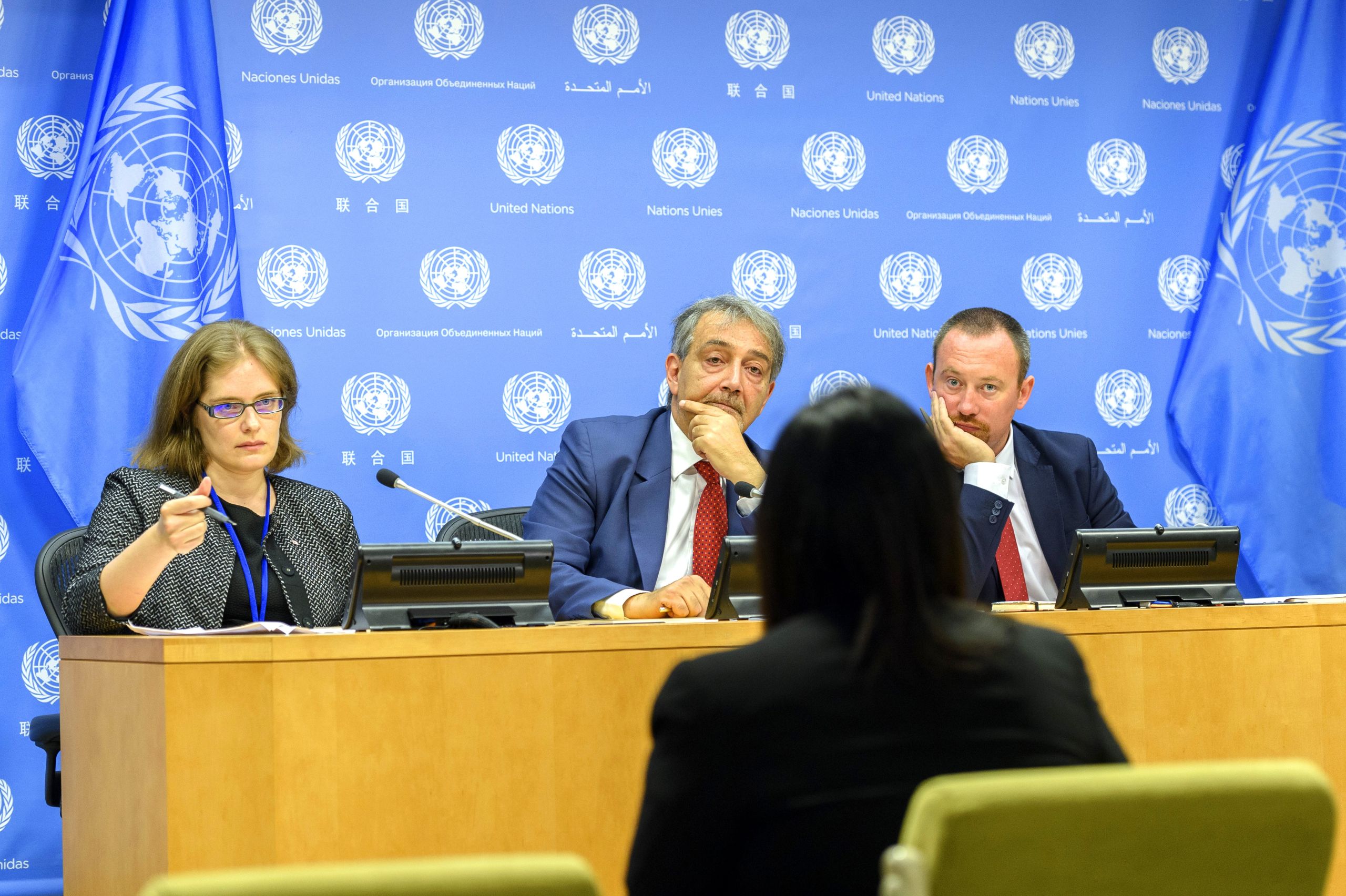
Heatwaves, especially in the context of big cities, again dominated the climate and attribution agenda in 2019, with several major events and reports assisting the humanitarian community to address the issue.
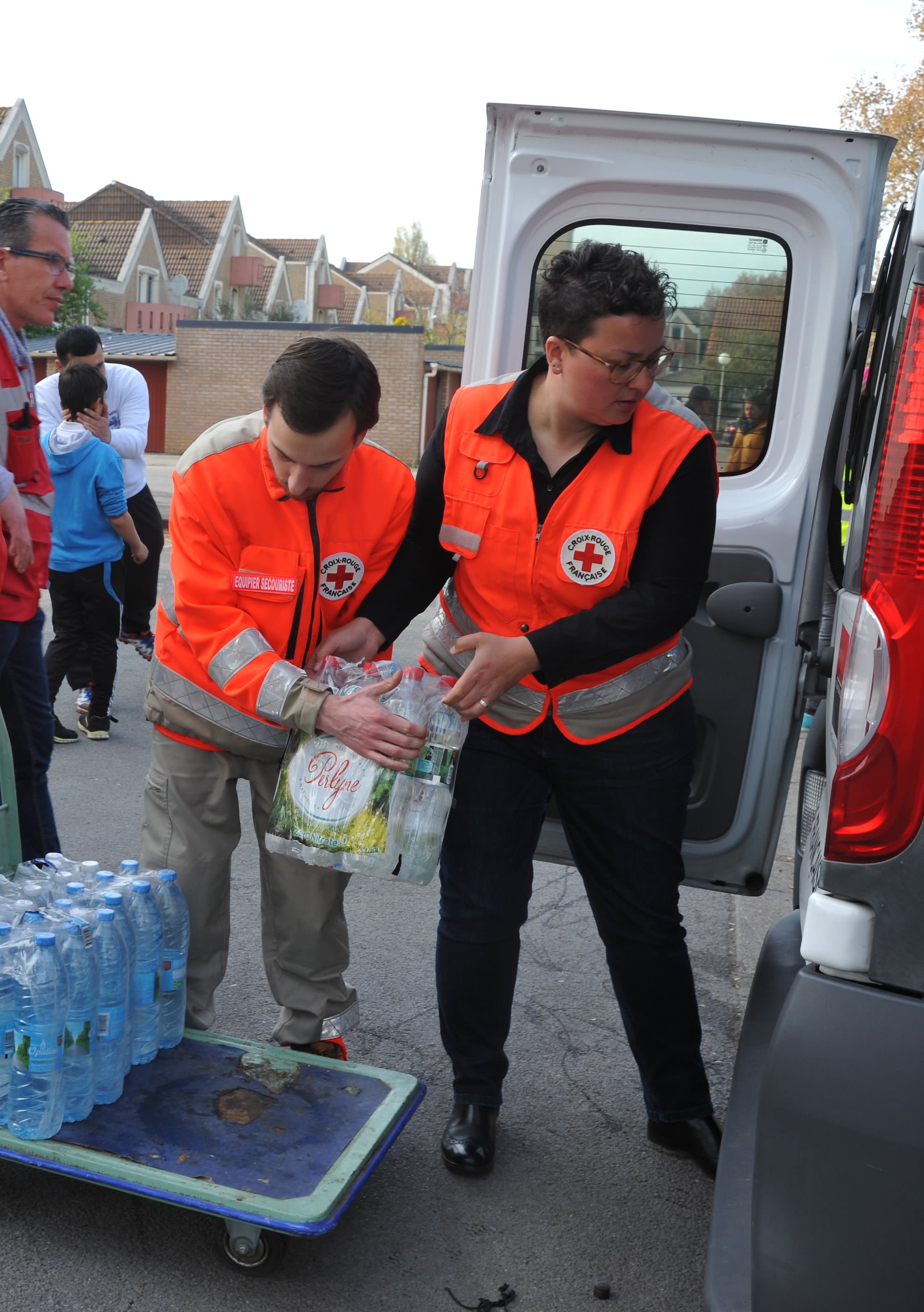
Summer 2019, French Red Cross volunteers distribute
drinking water to vulnerable people
In April the French Red Cross organized a conference on climate and health, dubbed “the first humanitarian COP”, in the Mediterranean city of Cannes that also marked the 100th anniversary of the founding of the IFRC. Dangerous heatwaves were high on the agenda, raising the profile of this hazard within the Movement itself.
IFRC President Francesco Rocca launched the Heatwave Guide for Cities at the high-level political forum on the Sustainable Development Goals at UN headquarters in New York in July (main photo), developed by the Climate Centre with at least 25 institutional partners.
In November, the Climate Centre’s first tactical urbanism event was hosted in Lusaka in collaboration with the Zambian group, People’s Process on Housing and Poverty, to raise awareness about heat risks in the cities.
The centre helped to facilitate the Movement’s fourth Urban Collaboration Platform in Beirut, and jointly organized a session on cities at the International Conference.
At the UN Climate Summit the IFRC joined a partnership initiative championed by Brazil and Kenya and including Climate Centre input: Building Climate Resilience of the Urban Poor.
The centre also partnered with ICLEI-Africa on workshops in Cape Town, Lilongwe and Entebbe centred on urban planning for African cities in the context of climate resilience.

Summer 2019, French Red Cross volunteers distribute drinking water to vulnerable people
Summer 2019, French Red Cross volunteers distribute
drinking water to vulnerable people
Conflict and climate
‘The International Federation and its Climate Centre is an increasingly important partner of the ICRC as we engage with people’s experience of...conflict and climate shocks’
– Hugo Slim, (former) Head of Policy, ICRC
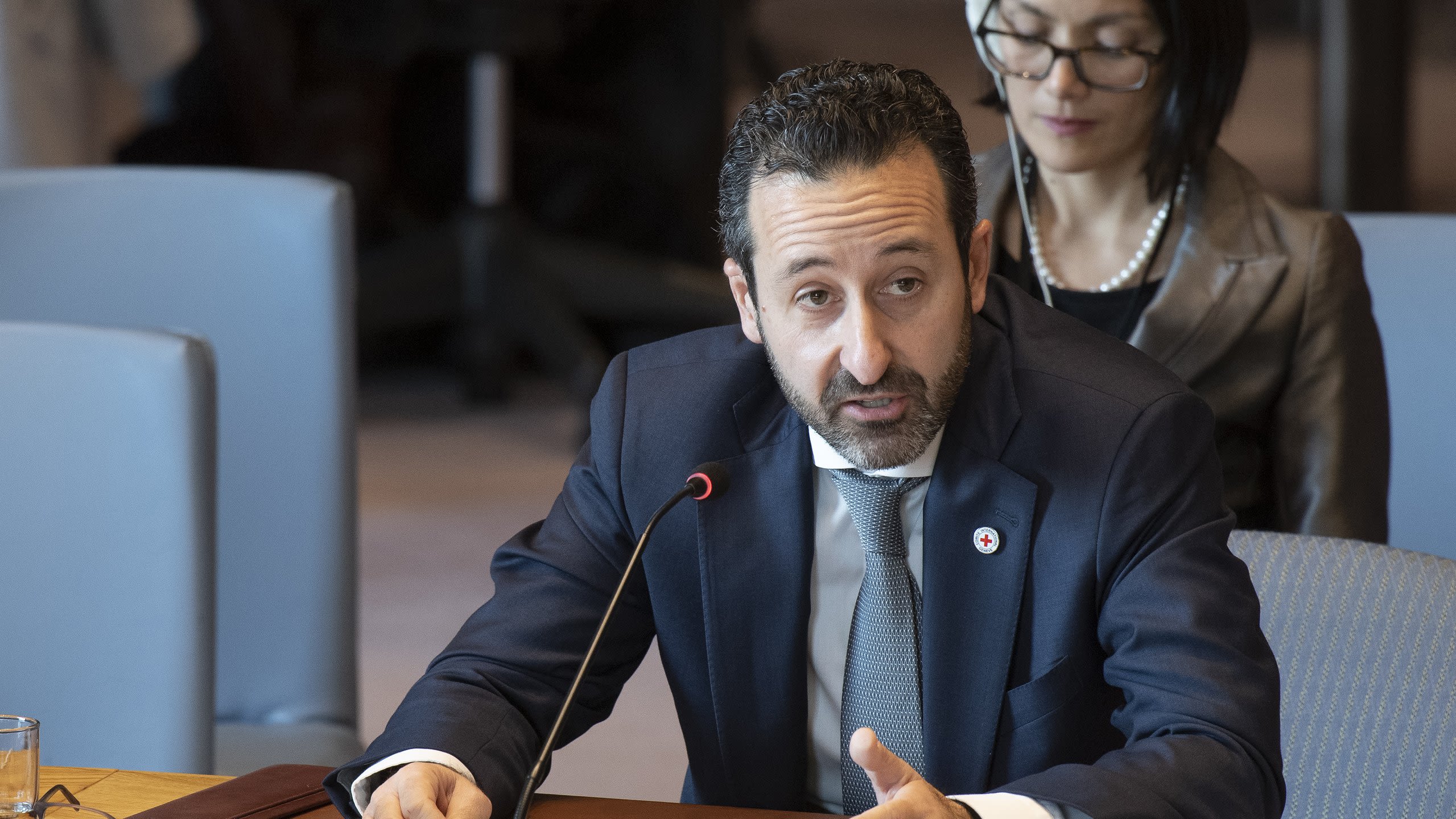
The view that “the escalating climate crisis” will over the next few years make humanitarian action even more complex and reliant on partnerships was put to an audience in Singapore by the ICRC’s (then) Head of Policy, Hugo Slim.
As the ICRC’s own strategy, issued in late 2018, put it, short-term humanitarian problems from conflict are aggravated by long-term factors like climate change, population, unplanned urbanization, and patchy development.
What is now often referred to as the “conflict-climate nexus” became yet more intractable last year, even before the massive complicating factor of Covid-19. The Climate Centre, a constituent part of the IFRC which also benefits from a deepening partnership with the ICRC, remained at the forefront of global efforts to make sense of it.
For example, we contributed to the International Committee’s updated Near and Middle East strategy, one of whose six thematic areas is climate.
The first of a series of high-level round tables on the interconnected impacts of climate and conflict was held in Nairobi amid heightened security after the attack in the city the same week.
Representatives from governments, financial institutions, international organizations, think tanks and universities framed a humanitarian perspective on climate and conflict.
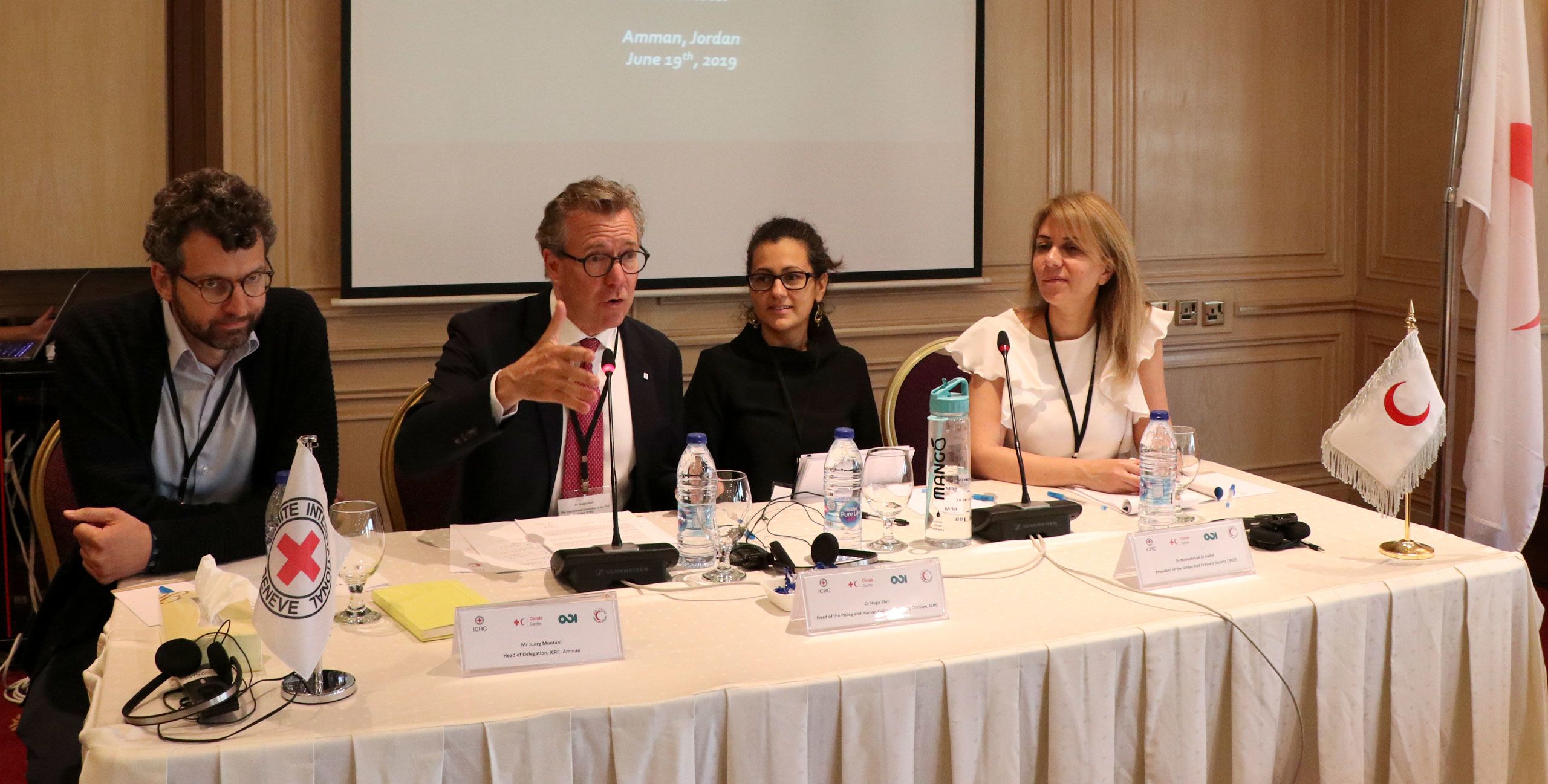
Hugo Slim (speaking) at the Amman round table with the Jordanian Red Crescent and the UK Overseas Development Institute
Hugo Slim (speaking) at the Amman round table with the Jordanian Red Crescent and the UK Overseas Development Institute
Six more round tables followed, including one in Jordan (photo above), the first in a Red Crescent country, and Abidjan, The Hague, Manila, Geneva and Washington, DC.
Another important first came when the ICRC’s Permanent Observer to the UN, Robert Mardini (now the International Committee’s Director-General), told an open Security Council meeting on climate and conflict that “climate change deepens vulnerabilities for communities affected by war” (main photo).
The 2019 statutory meetings between them saw many concrete commitments on climate: the International Conference, for example, included a side-event on how to run climate-smart programmes, along with the establishment of a consortium on climate research for the Movement co-chaired by Gilles Carbonnier, Vice-President of the ICRC, and Cecile Aptel, the IFRC’s Director of Policy, Strategy and Knowledge.
Youth
‘No one is too small to make a difference’
– Greta Thunberg (book title)
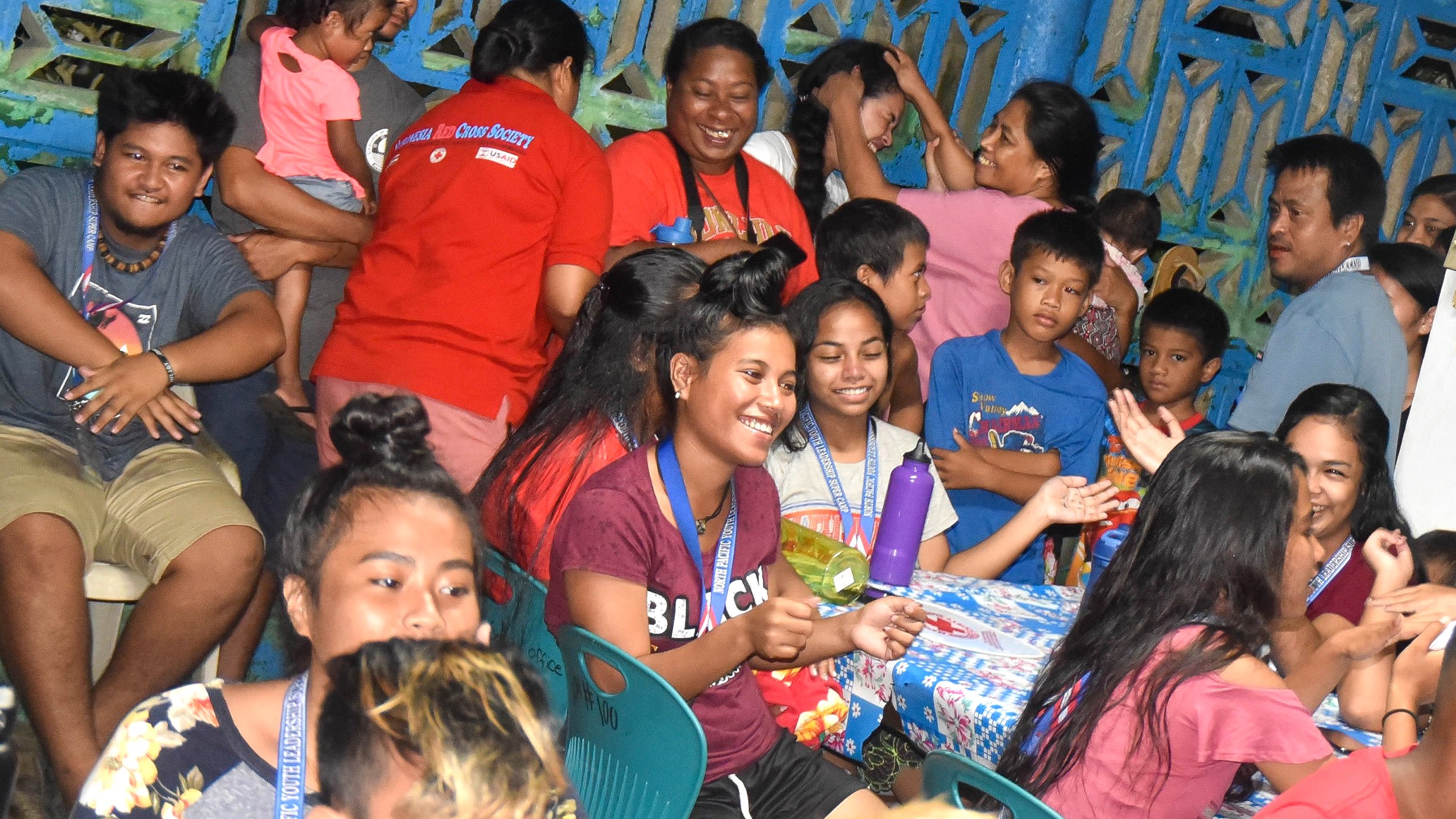
As millions of young people in at least 150 countries took to the streets to demand action on climate, the Climate Centre consolidated youth work that is now laid out in the Climate Centre Youth Strategy.
Last year saw real progress on the promotion of youth and climate across the Movement, including the launch in Solferino of a dedicated section of the Climate Training Kit, and strategic engagement at the 13th Mediterranean conference reflected in the presence of youth as a key priority in the Sarajevo Declaration.
We supported young people speaking on climate from Micronesia and Italy at the UN Climate Summit and at the European Conference on Climate Change Adaptation.
The Junior Researcher Programme engaged 14 students on climate work over the year and our flagship programme Y-Adapt continued to make its mark around the world.
A Y-Adapt specialist session, Experience the Environment, developed with the Iranian Red Crescent was launched, and lessons learnt from our pilot-year in Haiti and Guatemala were woven into resources and a five-step guide.
With the evidence base for a global launch of Y-Adapt established, National Societies in (alphabetically) Lebanon, the Marshall Islands, Micronesia, Palau, South Sudan and Uganda were developing plans for roll-outs aligned with their strategic objectives for young people.
Collaborations were established with education and environment ministries, NGOs and youth networks, enabling strategic scale-up.
Subsequent country-led Y-Adapt launches resulted in action by young people. Ugandan youth advocated for mosquito nets in school dormitories, for example, and in the Philippines young people planted new mangroves to protect vulnerable coastlines.
With increasing global demand for Y-Adapt a peer-to-peer approach was trialled at the first-ever youth leadership supercamp in Pohnpei, Micronesia, facilitated by the Philippine Red Cross (main photo).
Partners for Resilience
‘We want dignified communities, self-reliant communities…able to be conscious of climate change, able to solve their own climate issues and hold their governments accountable’
– Agnes Leina, Director of Il’laramatak Community Concerns, Kenya
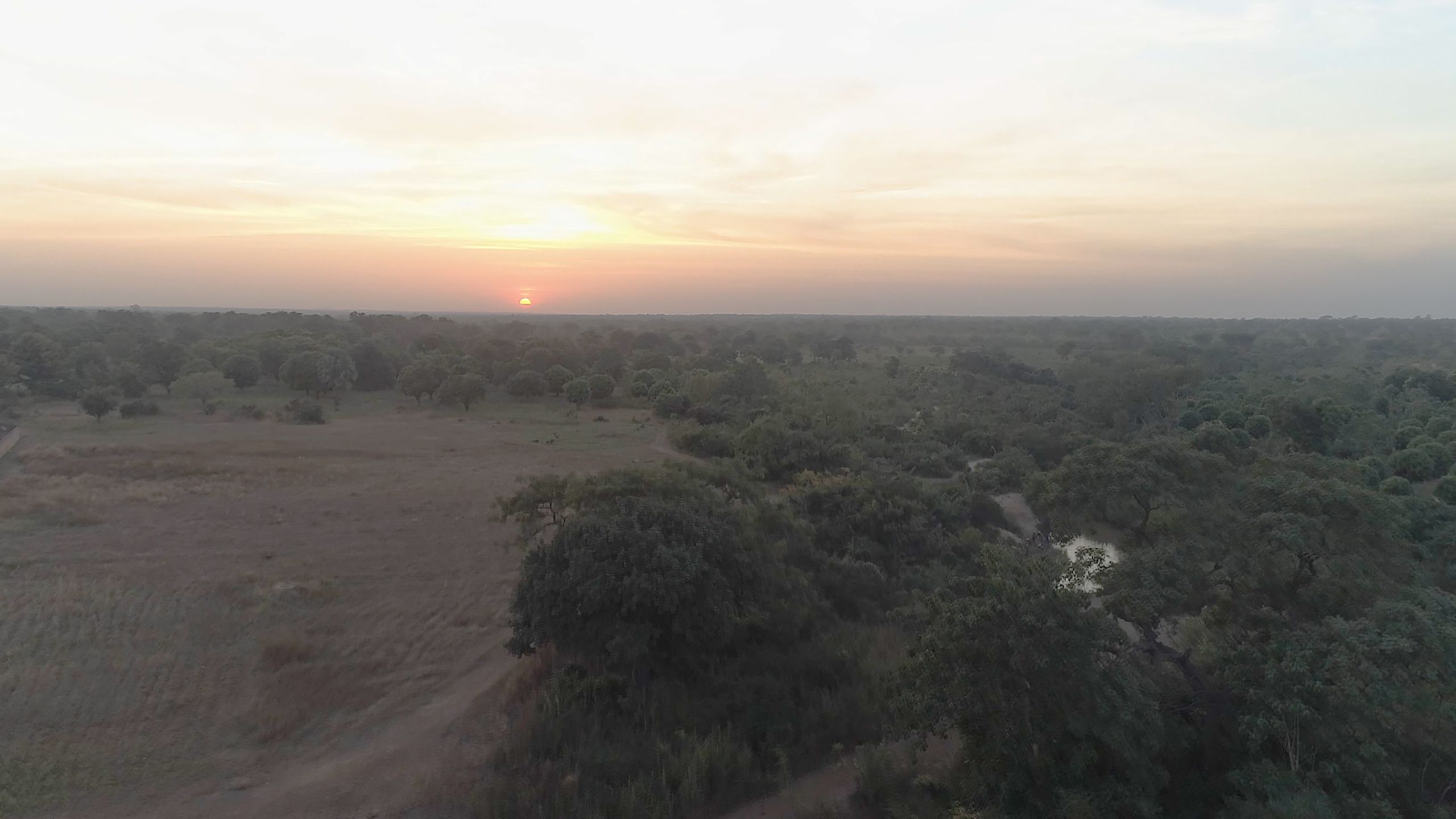
PfR aims to build the capacity of civil society to advocate for resilience and climate action, and to engage in dialogue on policy from the global to the local level. Much international work by the Climate Centre made possible by PfR is also covered elsewhere in this report, especially sections on policy and advocacy, youth, urban heat, and (see next section) the new Climate Training Kit.
Throughout 2019 we delivered strong messaging to a sequence of linked events, such as the Global Platform for Disaster Risk Reduction (GP2019) in Geneva, the Asia Pacific Climate Week in Bangkok, and the UN Climate Summit in September in New York, culminating in COP 25 in Madrid.

PfR, Jupiter Tenistuan, Oekiu village, Indonesia (see We Bend, We Do Not Break, 2020 for details)
PfR, Jupiter Tenistuan, Oekiu village, Indonesia (see We Bend, We Do Not Break, 2020 for details)
At GP2019, PfR outlined updated policy recommendations and with the IFRC co-hosted a networking event, We bend, we do not break, named after the alliance publication launched there.
Activities in each project country (PfR Annual Report) were aimed at influencing policy and empowering action by women, young people and the media on climate and boosting early warning early action.
In Guatemala, Kenya and Uganda, PfR submitted proposals to support governments with resilience-related components of their Nationally Determined Contributions, and in Indonesia with its National Adaptation Plan.
In Uganda, the alliance facilitated a session for East African journalists to explore thinking about climate and disasters, and the country became the first in Africa to roll out the PfR-supported Y-Adapt curriculum; partners also engaged in policy dialogue on the draft national climate bill.
In India the Red Cross agreed to strengthen collaboration with the meteorological department, while in Indonesia PfR supported an evolving national road map on land subsidence in coastal areas, helping to ensure climate and disaster risk were factored in.
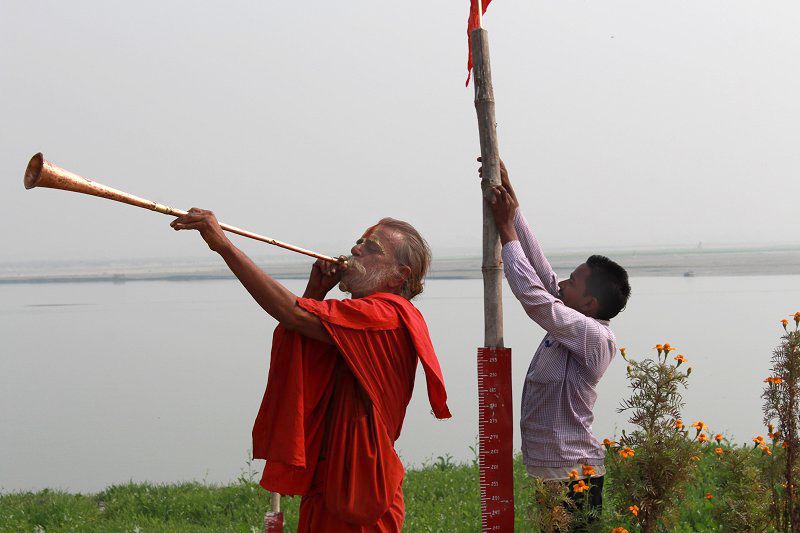
PfR-supported early-warning exercise, Saharsa district, Bihar, India
PfR-supported early-warning exercise, Saharsa district, Bihar, India
In Haiti the alliance is also is supporting flood preparedness in the Artibonite river basin through training for mapathons: volunteers helped create detailed risk maps and explored how management of the changing local environment could enhance the resilience of local people, especially farmers.
In Mali, PfR has continued to support community coalitions centred on disaster risk reduction in the Inner Niger Delta, including helping women’s unions advocate for equitable land tenure (video).
The Climate Centre has continued to provide technical assistance in PfR countries on heatwave preparedness and FbF, including early action protocols in Haiti, Indonesia and the Philippines.
Capacity building
‘Action on climate change should reach the most vulnerable, and we need to continue to raise our ambition for this agenda, together with governments, the private sector, scientists, civil society and others’
– Climate Training Kit, 2019
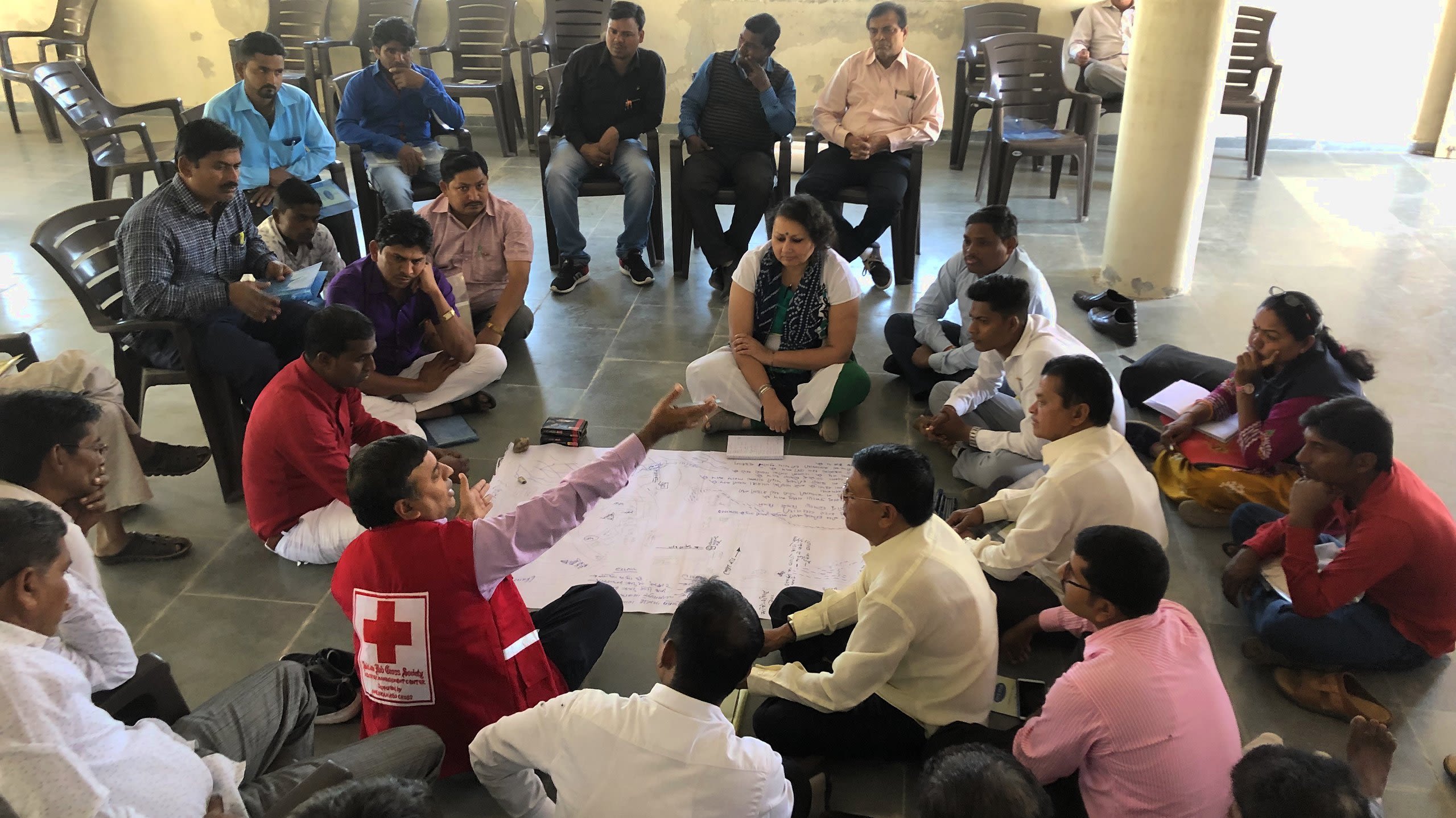
Over the past five years – for or with Movement and external partners – the Climate Centre and the IFRC have invested much time and resources in initiatives to build capacity to better manage climate risks and foster dialogue on policy.
This effort includes assistance with climate-smart programming and innovation and has been closely aligned with the new (2020) Movement ambitions on climate and the IFRC’s 2020 framework, whose vision is for “communities across the world to be more resilient and better prepared for climate change impacts now and in the future.”
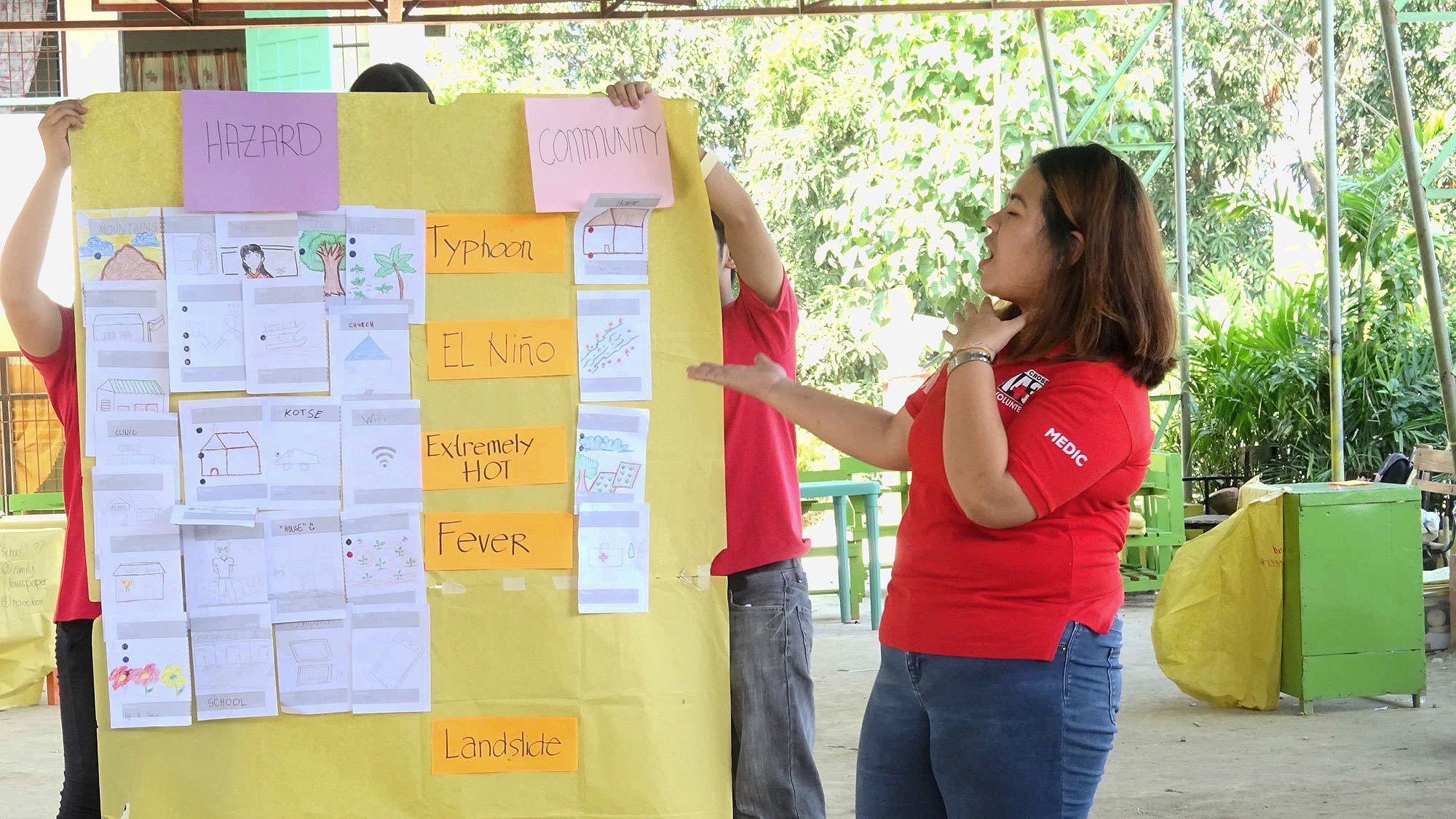
La Union branch, Philippine Red Cross, Y-Adapt training session
La Union branch, Philippine Red Cross, Y-Adapt training session
Last year the Climate Centre and the IFRC jointly launched a new edition of the Climate Training Kit, which draws heavily on PfR experience and includes a wide variety of tools on engaging with climate policy, climate-smart practices and innovation, as well as technical aspects of climate-risk management, policy, finance, early warning early action, FbF, youth and more.
The interactive kit – aimed at trainers and facilitators from the Movement and its partners – is a conscious attempt (even before Covid-19) to strengthen capacities worldwide without having to put specialists on aeroplanes.
Some kit highlights: the Heatwave Guide for Cities, a new brief on Collaborating with national climate and weather agencies: a guide to getting started, and another, What is Climate-smart programming and how do we achieve it? (Most of the kit will be available in French and Spanish by mid-2020.)
Innovation
‘For humanitarians access is key. Humour, deployed at the right time with sensitivity and empathy, can build bridges and open doors’
– Marcia Wong, ICRC Head of Policy, Regional Delegation for the US and Canada
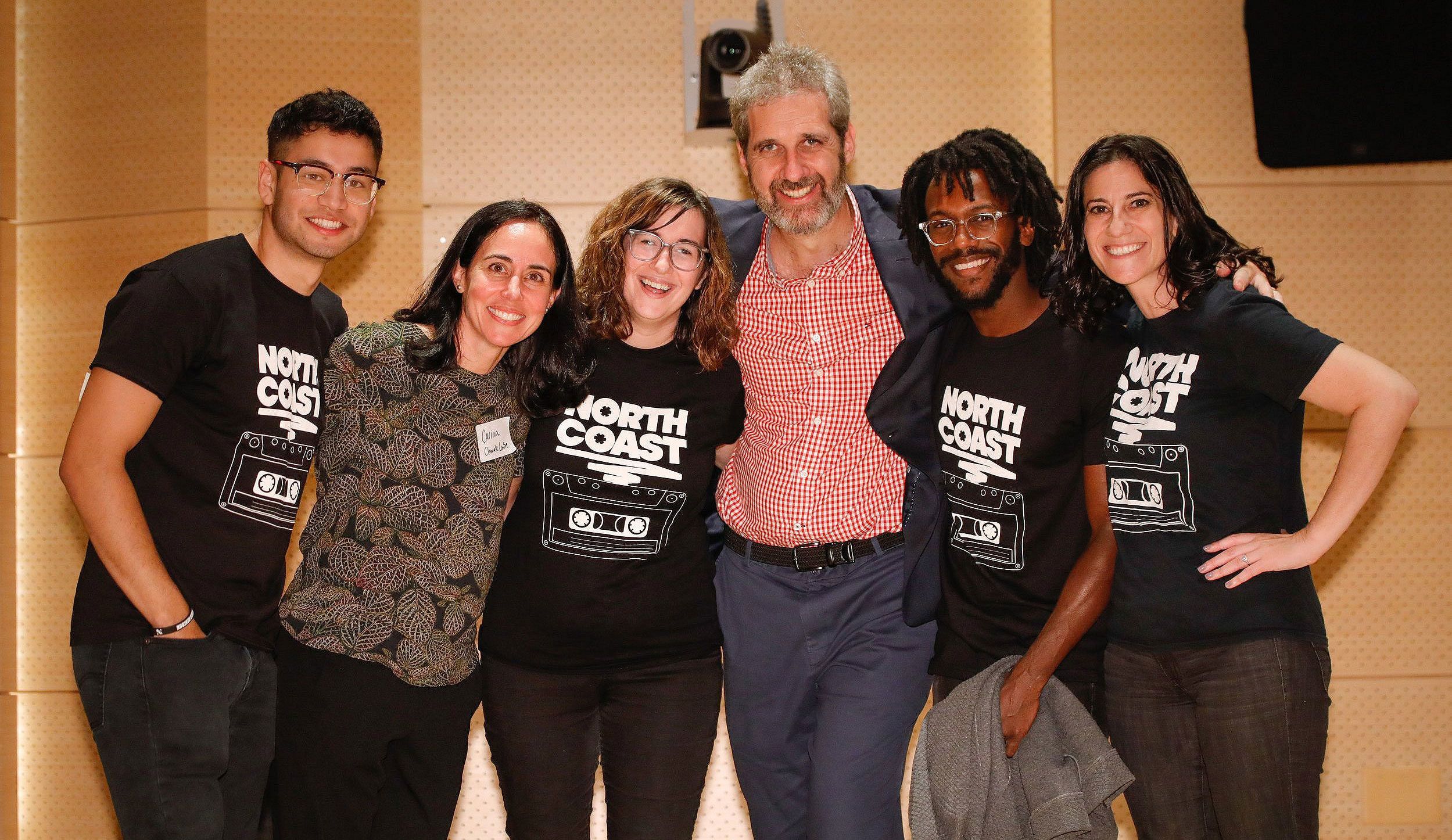
The Climate Centre has continued to pursue innovative approaches to link science, policy and practice, consolidating previous explorations such as the humanitarian dimensions of geoengineering, with a presentation to The Elders and a workshop at Harvard University.
Additional refinements included widening the application of games for teleconferences and a collaboration with Deltares on the evaluation of machine-learning to support forecast-based financing.
A Year Without A Winter, which included a chapter on the Climate Centre’s use of art in reflections on the humanitarian implications of our changing seasons, was selected as one of the best art books of 2019 by New York Times.
(Commentary by Rebeka Ryvola)
(Commentary by Rebeka Ryvola)
Our approach to the design and facilitation of events has continued to open doors for influencing thinking on climate risk: examples include the FbF kinetic sculpture at the Global Platform for Disaster Risk Reduction 2019 and our hip hop-enabled session at the UN Climate Summit (main photo).
We have consolidated an unconventional yet happily successful approach: harnessing humour to communicate risk.
In collaboration with the US cartoonist Bob Mankoff, this work has grown rapidly: a TEDx Talk, a workshop at the ICRC’s InspiRED Days, numerous workshops at the UN Climate Summit, a cartoon-infused summary of the IPCC’s special report on oceans and ice, and a report to Climate-KIC on humour for system dynamics, to name but a few.
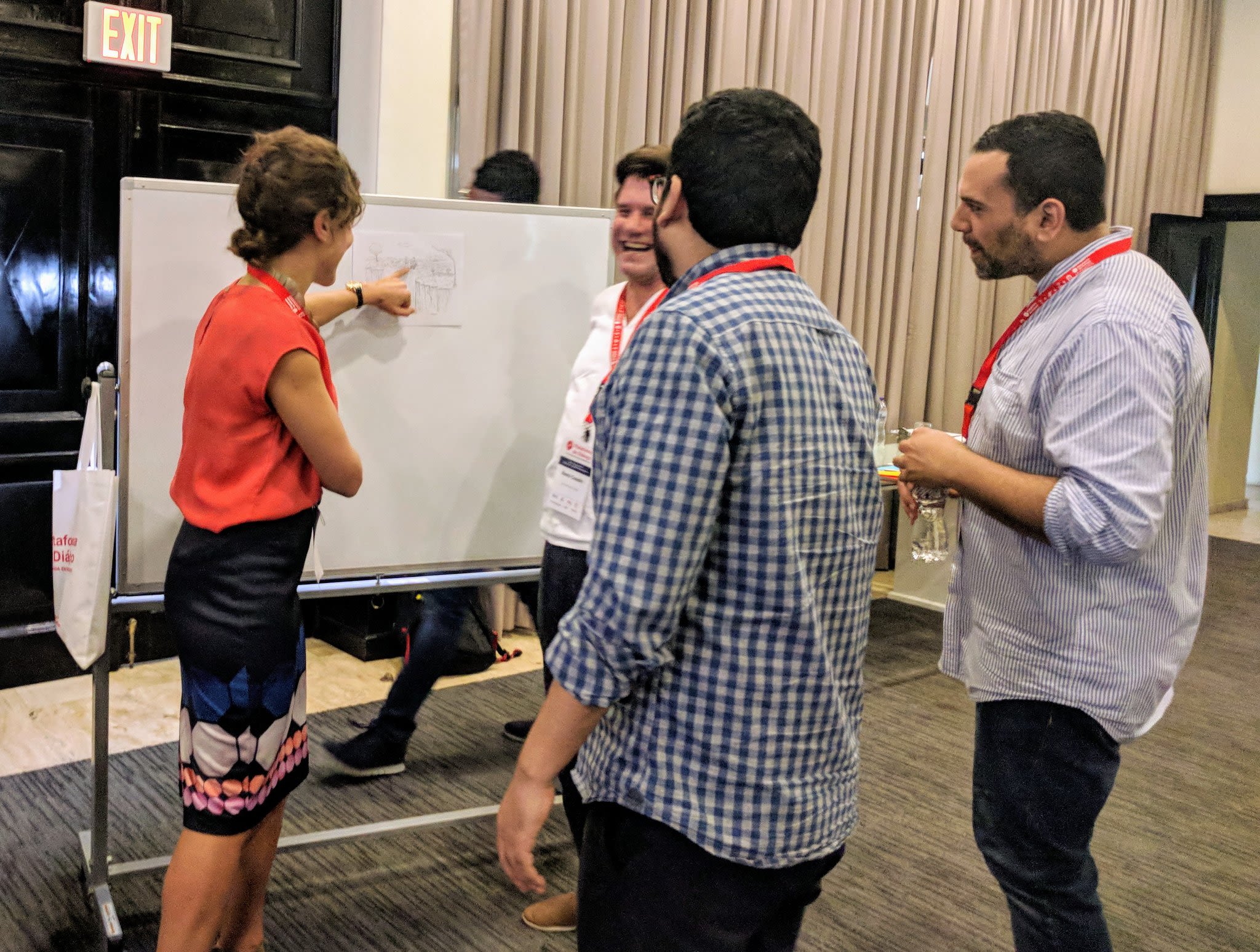
Humour triggers critical thinking, cartoons at the May dialogue platform for FbF in Latin America and the Caribbean
Humour triggers critical thinking, cartoons at the May dialogue platform for FbF in Latin America and the Caribbean
New initiatives developed during 2019 included our exploration of people’s feelings of depression and anxiety over climate change.
From Darkness to Illumination: Climate Grief and Resilience in a Sea of Warnings is a report that distills our session at Development & Climate Days, including neuroscience, psychosocial support in war zones, satellite art and musical soundscapes.
The goal? To improve our collective ability to anticipate, diagnose, and provide support on the journey from darkness to illumination and transformative action.
Communications
‘What I took away from the session is that humour is about communication, not entertainment’
– Margaret Arnold, Senior Social Development Specialist, World Bank
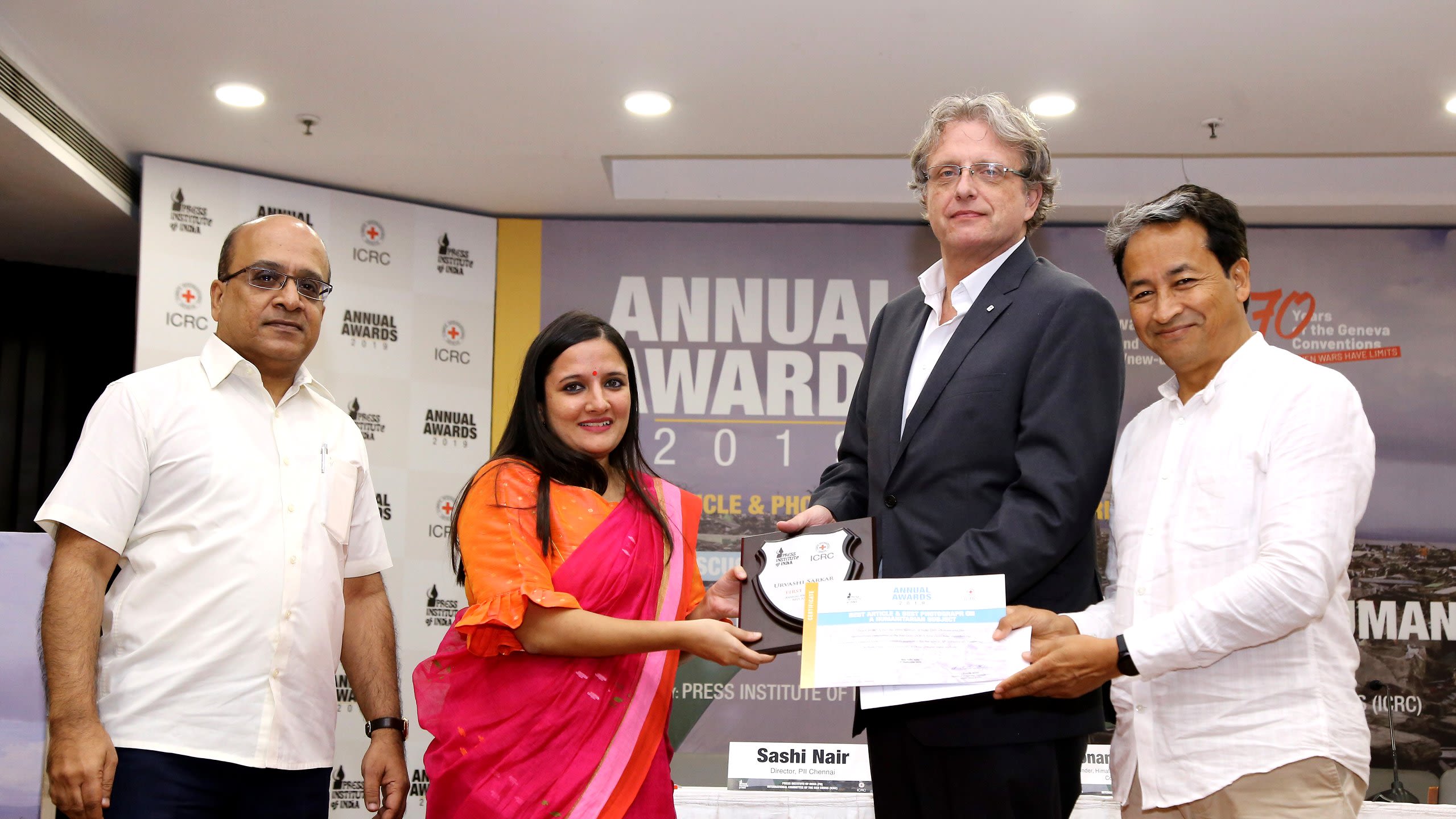
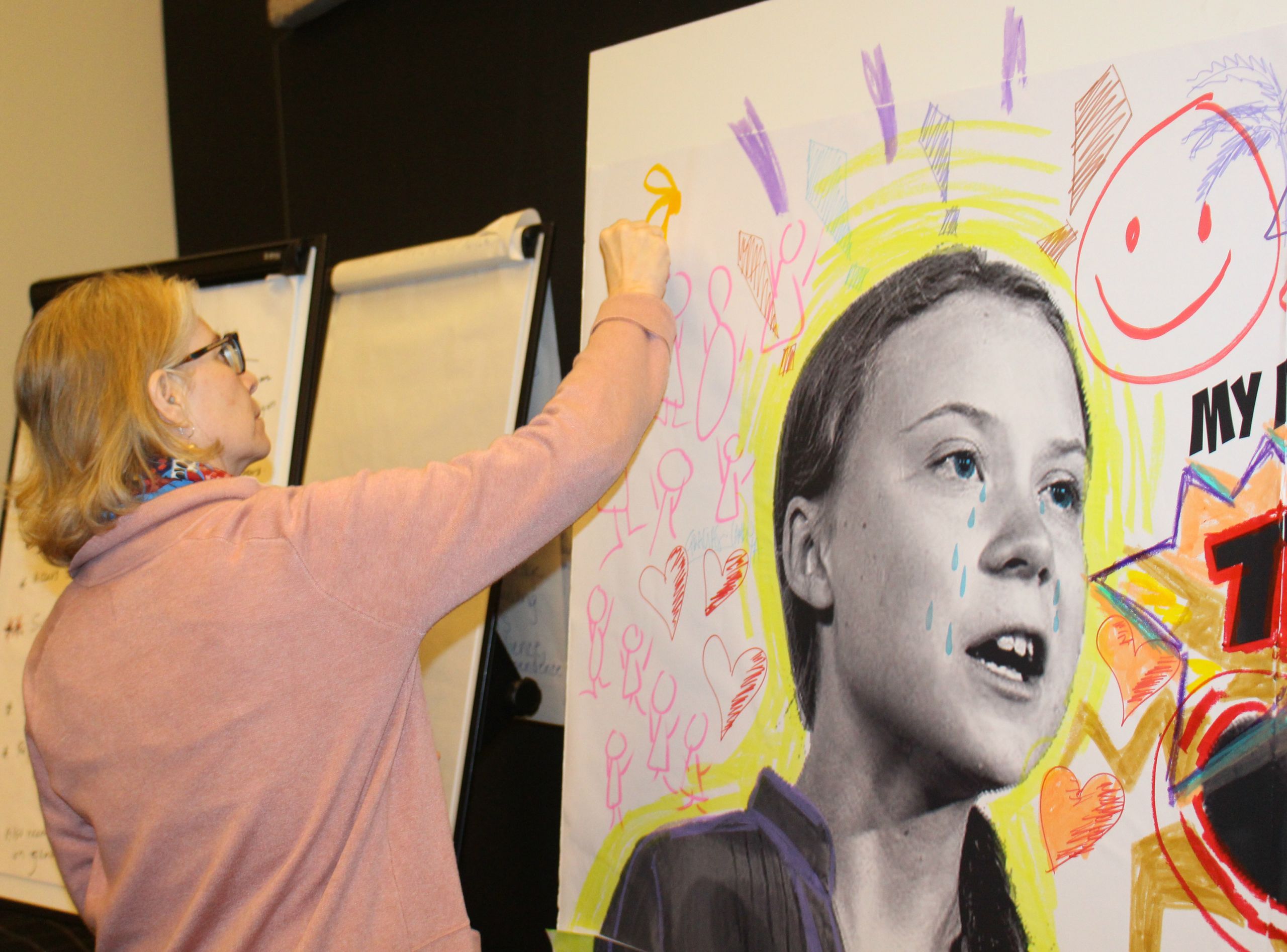
Mural, D&C Days, Madrid
In April the Climate Centre added LinkedIn to its portfolio of social-media platforms (Twitter and Facebook), and we now have nearly 2,000 followers there, greatly adding to our audience reach.

Mural, D&C Days, Madrid
Our chief content strand continues to be web news, including op-eds by the director, staff blogs, and cross-promotions of IFRC, ICRC and Thomson Reuters Foundation material, of which we generate three per working week on average for an annual total of just over 140.
Our role as a reference centre for the Movement was reflected in the communications area, as elsewhere, by steadily increasing collaboration and cross-fertilization with the ICRC.
We reported in detail on two of the round tables held last year with the International Committee on the “conflict-climate nexus” and, for example, cross-promoted a wide-ranging talk by its (then) Head of Policy, Dr Hugo Slim, at a conference in Singapore.
A historic webcast virtual event from COP 25 in Madrid and simultaneously the International Conference was the first time the most senior figures from each meeting have been brought together and this included IFRC Secretary-General Elhadj As Sy, as well as the ICRC’s Director General, Yves Daccord, and its Regional Director for Africa Patricia Danzi.
The Climate Centre’s new collaboration with Bob Mankoff, cartoon and humour editor of Esquire magazine, was designed “to bring humour into humanitarian communications”, our news report said.
But in terms of simple audience reach, by far the greatest impact last year – indeed a clear record for any Climate Centre communications exercise – was achieved after we deployed our Kampala-based camera operator Denis Onyodi to Maputo shortly before Cycone Idai struck Mozambique.
IFRC media-monitoring later found that of at least 11,000 media and social-media mentions linked to the Red Cross and Cyclone Idai, 600 had been triggered by Denis’s Climate Centre stills and footage, including drone aerials.
Photos by Denis taken on 15 March immediately after the Red Cross team emerged from their shelters were widely shared by news agencies and would have been seen by many millions of people worldwide.
Reuters published a photo gallery using photos from the IFRC and the Climate Centre, whose deployment was made possible by the German Red Cross forecast-based financing team in Mozambique.
FINANCE
The Climate Centre – an independent foundation under Dutch law – continues to be grateful to its hosts, the Netherlands Red Cross in The Hague, which provides support with human resources and legal affairs.
In 2019 most of the Climate Centre’s income came from the Netherlands Ministry of Foreign Affairs, the UK Department for International Development, the German Federal Foreign Office and Ministry for Economic Cooperation and Development, and the IKEA Foundation.
We were also supported by the ICRC and the IFRC secretariat and these National Societies, in alphabetical order:
American Red Cross
Belgian Red Cross
British Red Cross
Danish Red Cross
French Red Cross
German Red Cross
Iranian Red Crescent
Netherlands Red Cross
Swiss Red Cross.
We are grateful to the New Zealand Red Cross which funds two Climate Centre staff based in the Pacific, and to the American Red Cross with which we also share staff.
Other contributors were (alphabetically): l’Agence française de développement, the Carnegie Climate and Geoengineering Governance Initiative, Climate-KIC/EIT, the European Commission, ICLEI-Africa, Mercy Corps, the (UK) Met Office, Monaco Cooperation, NASA, the (UK) Natural Environment Research Council, the World Bank, the World Meteorological Organization, the World Resources Institute, and the Zurich Flood Resilience Alliance.
A full financial statement will be available in the hard-copy version of this report later this year, along with an infographic summary to be added here.
As always, we very sincerely thank all our supporters for their generosity and their collaboration.
